
































 Dear Readers,
Dear Readers,
From relatively simple paths, through to fullyengineered paved bikeways (complete with bridges, underpasses and even floating and/or elevated ‘boardwalk’ sections) bike paths and recreational trails now represent a significant infrastructure investment for councils and road authorities throughout Australia.
In addition to these ‘purpose-built’ facilities, there is also an extensive network of ‘on-road’ dedicated cycle lanes ranging in size from small, partial-lane, through to full-lane, and even ‘half road’ bike lane space allocations. In fact, in many areas, the bike path and lane network has been developed to such an extent that it now transcends a simple recreational facility - moving instead into the realm of a legitimate - and critical –transport corridor.
While the development of high quality bike path infrastructure has played a major role in encouraging people to take up cycling, scootering, etc., it is nothing compared to the boom in cycling and scootering that occurred as a result of the COVID-19 pandemic.
The move out of ‘lock downs’ and away from working from home has been accompanied by a strong reluctance by many to re-engage with public transport. And while this has resulted in a significant increase in commuter vehicle numbers, those factors, combined with ever-increasing cost-of-living pressures are also key factors in the massive
increase in the number of people now using bicycles, scooters and similar forms of transport to commute to and from work and for other regular journeys. One only has to look at the growth in usage along major bicycle infrastructure corridors around the country to appreciate just how significant the growth in demand for these facilities has been over the past year alone.
Interestingly, the increase in bicycle infrastructure, together with the massive increase in the popularity and use of these facilities has raised a number of important issues - particularly in relation to managing usage and safety issues.
First and foremost is the question of ‘traffic’ speeds and hierarchies.
Even though the majority of these facilities have been designed for use by both pedestrians and cyclists - with many linemarked in an attempt to separate the two - the apparent lack of understanding of how this ‘shared use’ system should work often results in an extremely dangerous situation for cyclists and pedestrians alike.
This problem is further compounded by the significant speed variables that prevail both between and within the two user groups (eg. walkers vs. joggers / slow cyclists vs. fast cyclists) and between other users, such as those on electric bikes, electric scooters and any other number of fast-moving, hybrid devices now available in the marketplace.
With an ever-increasing number of people
now using bike paths and recreational trails on a regular basis, I believe that the time has come for us to make every effort to educate the community as to the correct use of these facilities. We may even need to consider separate ‘higher-speed’ lanes.
Although it may seem fair to assume that most people would know (instinctively or otherwise) how they should behave when using these facilities, and what rules applyboth in terms of acceptable usage and traffic rules - the evidence would suggest that this is regrettably not the case.
Put simply, I believe that if we are to succeed in encouraging more people to use these facilities, either for recreation and fitness or as a legitimate form of sustainable transport, we need to ensure that these facilities are well managed, well maintained and safe for all to use. And for this to happen, we will also have to invest in an education campaign that teaches people how to use these facilities correctly and safely.
Anthony T Schmidt Managing Editorto the
and re-direction of a 10,000kg truck travelling at 90km/h and a 2,270kg

engineering: Ezy-Guard LDS Z-post design makes it suitable for installation in rock, asphalt or concrete mowing strips. Post-on-baseplate: Can be installed as a post-on-baseplate for areas where underground services restrict posts from being driven into the ground.
at 100km/h with a low deflection of only 1.1 metres.
designed for safety: The Z-section post maximises the bending resistance of the post for angled vehicle impacts.

rapid installation, Cost savings: Fewer components to purchase, savings on freight costs and faster to install.
narrow Width: A system of just 245mm conserves valuable formation width.
and Manufactured in australia: Made by Ingal Civil using Bluescope steel. Quality Control: Components are stamped to ensure traceability and quality control.
Consideration for Vulnerable road users: Ezy-Guard LDS is compatible with the MPR Motorcyclist Protection Rail (MPR) offering further protection for motorcyclists.
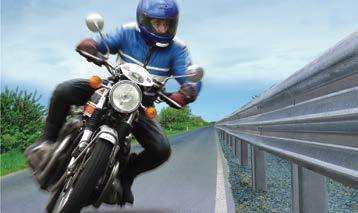
Charles Darwin University (CDU) has become Australia’s first and only university accredited to offer 100 per cent online engineering courses without the need for any on-campus delivery.

From Semester 1 2023, CDU will be able to offer its students the opportunity to complete engineering courses fully online after being awarded accreditation from Engineers Australia. This means that students who are studying a Bachelor of Engineering Science, Bachelor of Engineering Honours and a Master of Engineering can choose to study at CDU remotely from anywhere in Australia.
CDU has moved to introduce fully online engineering courses to better support the workforce needs of Northern Australia, which is currently experiencing a shortage of engineers.
College of Engineering, IT and Environment Dean, Professor David Young, said CDU is well equipped to deliver fully online degrees which will help to meet Northern Australia’s demand for engineers.
“During COVID-19, CDU was able to continue to deliver subjects online without any disruptions, so we are well equipped to deliver our engineering courses fully online,” Professor Young said.
“CDU has made a long-term commitment to invest in engineering education as there is a significant need for locally trained engineers in Northern Australia.”
“It can be difficult to find people who are prepared to commit to long-term employment in Northern Australia so providing an option for students to study fully online will help to address this demand by providing realistic study options and pathways for students.”
Students who choose to study
engineering fully online will learn through various methods including take home kits, teamwork, guest lectures by practicing engineers, work experience and laboratory work where students can remotely navigate machinery at labs located on campus at CDU.
Discipline Chair of Engineering and Information Technology at CDU, Professor Friso De Boer said a variety of strategies have been developed to ensure fully online students get an experience as close as possible to if they were studying on campus.
“It is really important to us at CDU that students studying 100 per cent online have the best experience they can have when studying at CDU,” Professor De Boer said.
“Fully online students will learn through a range of methods including take home kits, videos, simulations and real time labs where students can remotely navigate machinery that is located on campus.
“This will aim to resemble as closely as possible, the hands-on experience of oncampus students.”
Students who study engineering at CDU, whether it be through on-campus learning or fully online learning, have some of the best employment opportunities of graduates from any university in Australia.
According to the Good Universities Guide 2023, CDU is number three in Australia for engineering employment outcomes with students going on to work at organisations such as Power and Water, NT Government and INPEX.
Learn more about Engineering and the flexible study options available at CDU at: https://www.cdu.edu.au/study/engineeringonline
Western Australia's EV fast charging network has taken a major step forward with the McGowan Government awarding JET Charge the contract to provide 98 EV chargers at 49 locations around the State - creating the world's longest continuously connected electric highway. The State Government is delivering the highway through Synergy and Horizon Power, with the $4.1 million project to extend more than 6,600 kilometres.
WA's EV fast charging network will stretch from Kununurra in the north, to Esperance in the south, and east to Eucla. Each location will have both a standard and fast charger. The fast chargers, which are up to 150 kilowatt DC, will allow drivers to top up their EVs in as little as 15 minutes. The first charging station is expected to be installed in November this year, with the network to be fully operational by 2024.
“WA's EV fast charging network is an important step to boost our uptake of electric vehicles, enabling drivers to travel the vast distances around the State more easily,” said WA Premier Mark McGowan.
“This will help to reduce carbon emissions, as WA transitions to net zero by 2050,” he said.
“When completed, WA's EV fast charging network will be the world's longest of its kind - with construction well underway and expected to be completed by early 2024,” the Premier added.
EV owners will easily be able to travel the State along these routes, with the average distance between charging stations less than 200 kilometres.
Australian company JET Charge is a market leader in installing and sourcing
 Charles Darwin University (CDU) has become Australia’s first and only university accredited to offer fully online engineering courses from Semester 1, 2023.
Charles Darwin University (CDU) has become Australia’s first and only university accredited to offer fully online engineering courses from Semester 1, 2023.
high-quality chargers and hardware to support and accelerate the growth of EVs.
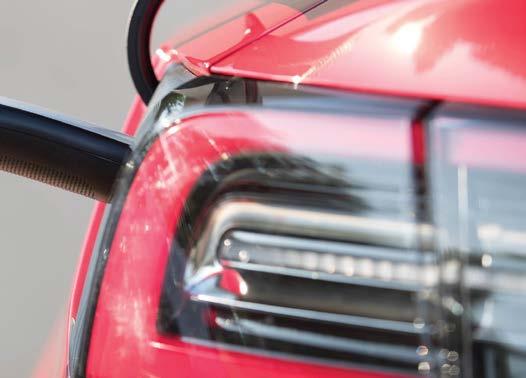
WA Energy Minister, Bill Johnston, commented: “The McGowan Government is supporting the rapid uptake of electric vehicles and ensuring our electricity system remains secure and reliable.”
“When the project is complete, there will be charging stations averaging less than 200 kilometres apart, ensuring EV owners can
explore our amazing state without any range anxiety.”

“With an office in Western Australia, JET Charge is a well-known Australian company and considered experts in the growth area of EVs,” Minister Johnston said.
WA Climate Action Minister, Reece Whitby, added: “The EV fast charging network will help to reduce Western Australia's overall emissions, as we work to achieve net zero by 2050.”
“An electric vehicle charged using the State's main electricity grid will generate 30 per cent less greenhouse gas emissions than a conventional petrol vehicle,” Minister Whitby continued. “WA's EV fast-charging network is just one of the many initiatives the State Government is undertaking to deliver a cleaner energy future and combat climate change.”
Speaking about the new fast-charging network, JET Charge Chief Executive Officer, Tim Washington, said that JET Charge is proud to be involved with a landmark EV charging network that features a lot of Australian-made innovation.

“We started JET Charge almost a decade ago to accelerate the transition to low emissions vehicles in Australia by breaking down the barriers to electric vehicle charging.”
“This charging network will absolutely smash those barriers allowing people to drive EVs all over the great State of Western Australia,” he added.
The project is part of the McGowan Government's $43.5 million investment to boost EV charging infrastructure around the State.
Following a decision of its Board of Directors, made up of representatives of the 27 EU Member States, the European Investment Bank (EIB) has revised its Transport Lending Policy.
The new Transport Lending Policy is aligned with the EIB Group’s Climate Bank Roadmap framework and is incorporated in the document “The Way Forward: investing in a cleaner and smarter transport system”.
The Transport Lending Policy outlines the EIB’s investment priorities in supporting the rollout of new innovative technologies, as well as mature Paris-aligned projects that matter most to enable the transition of the transport sector to decarbonisation and depollution, safety and security, accessibility, greenness and efficiency (SAGE).
In line with EU objectives and the Climate Bank Roadmap, the aim of the policy is to support the transition to a net-zero future, moving away from fossil fuels to more sustainable solutions. Eligibility for EIB support for transport-related projects will continue to be determined by the guiding principles set down in EIB Group’s Climate Bank Roadmap. The roadmap is intended to reinforce the Bank’s contribution to its areas of activity and its impact in tackling climate change and environmental concerns, setting specific Paris-aligned investment criteria.
The updated policy reflects the contributions of the public consultation — in line with the EIB Group Transparency Policy — held between July 26 and October 29, 2021. The consultation involved more than 3,500 individuals and organisations including civil society groups, transport campaigners and representatives of the transport industry.

Efficient transport and mobility are essential to guarantee and safeguard the free movement of people and goods. The new EIB policy commits the EIB to prioritise a safe and secure, accessible, green and efficient way of meeting growing transport demand in Europe and beyond.
European Investment Bank Vice-President Kris Peeters said: “Transport is today both a problem and a solution for society. It is the only major sector where greenhouse gas emissions continue to grow, yet it is also critical for trade, employment and development as well as a key feature of modern life.”
“It allows people and goods to travel fast and everywhere and brings prosperity to nations around the globe. However, it is high time to make transport and mobility truly sustainable,” Mr Peeters said.
“The new EIB Transport Lending Policy takes a comprehensive view to making transport safe, accessible to all, green and efficient.”
“Better transport is not in contradiction with a better climate. By aligning our support for transport and mobility projects with our Climate Bank Roadmap, we help transform our unsustainable transport systems into sustainable ones,” he added. “The EIB is continuing to redirect its financing efficiently to respond to the climate and environmental emergency that confronts us all.”

Autoliv, Inc., the worldwide leader in automotive safety systems, and POC, a global leader in snow sports and cycling protection, have joined forces to study and develop bicycle and e-bike helmets equipped with airbag technology to improve head protection and reduce the consequences of an impact.
Head injuries alone account for half of the deadly bicyclist injuries. Although it is established that helmets are beneficial to head safety, the latest Bicycle Safety report by Swedish insurance company Folksam makes the case that helmet absorption efficiency could still be greatly improved, especially when collisions occur with a car at speeds above 20 km/h (12 mph).
POC and Autoliv have been working together to assess the potential of using airbag technology in helmets. The airbag would act as the initial energy absorber while the underlying helmet would be the following energy absorber.
After conducting a pre-study, conclusion from the Autoliv research team is that a cycle helmet with an integrated airbag can significantly improve protection and reduce the consequences of impacts to cyclists. The combination of both absorbing technologies enables a reduction of the peak linear head acceleration and significantly reduced head injury risk in impact tests. The pre-study also showed that the protection improvements could be reached without critically compromising the design, weight, or comfort of a helmet designed with integrated airbag technology.
The pre-study showed that the addition of airbag technology on top of the helmet can significantly contribute to enhanced safety performance, especially in linear impacts. It is estimated that the risk for a bicyclist to sustain moderate to fatal head injuries is reduced from 80% to 30% in a 20 km/h (12 mph) impact.
Boosted by the increased environmental consciousness and the emergence of e-bike commuting, the number of bicycle riders worldwide is increasing rapidly. This growth needs to be supported by an improved helmet protection, especially at higher speeds enabled by e-biking.
During the pre-study, Autoliv and POC developed the initial concepts by advanced simulation tools and conducted correlated physical crash tests. The successful outcome of the pre-study will now lead to further testing and refinement with the objective of developing the concept further and potentially bringing a product to the market.
Autoliv has formed Mobility Safety Solutions (MSS) to extend its business into new market areas beyond light vehicles and occupant safety. By combining our core competence and industry experience, MSS develops and manufactures mobility safety solutions such as pedestrian protection, battery cut-off switches, connected safety services, and safety solutions for riders of powered two-wheelers.
Find out more at: https://campaign.autoliv.com/helmet-with-airbag
Lack of regulation around e-scooters across the country leaves pedestrians vulnerable as safety concerns over electronic scooters increase, a Charles Darwin University (CDU) expert warns.

CDU Lecturer in Law, Dr Ciprian Radavoi, has been researching the rights and responsibilities between pedestrians and e-scooters and the level of enforcement of speed limits and safety rules, which vary significantly across Australian cities when it comes to using e-scooters.
According to Dr Radavoi, from the Asia Pacific College of Business and Law, the regulatory framework for e-scooters in Australia has been designed almost exclusively with the e-scooter rider’s safety and comfort in mind, which leaves vulnerable people at risk because of poor and unenforced rules around e-scooter use on footpaths.
“Pedestrians, people in wheelchairs, or cultural and ethnic groups who traditionally socialise on footpaths have been largely ignored by the policymakers,” Dr Radavoi said.
“I decided to do this research when noticing how the life of pedestrians, people who use wheelchairs, and Aboriginal groups in Darwin has become more difficult with the hundreds of e-scooters rushing on the footpath, often honking at other footpath users to clear the way.”
Dr Radavoi said there was something wrong with how the rules were made.
“There are problems from allowing heavy machines to drive at high speeds among vulnerable individuals, to allowing e-scooters to be abandoned randomly after use, hindering pedestrian and wheelchair traffic, and creating a risk of accidents,” he said.
Dr Radavoi said the poor design and enforcement of e-scooter rules result from the lack of a transparent process of balancing competing interests between e-scooter users and pedestrians.
The growth of e-scooters has grown significantly across Australia.
According to market research company Prescient and Strategic Intelligence, the micro-mobility market is worth about $16.9 million, but is expected to increase to $19 billion in 2030.
However, according to Dr Radavoi, e-scooter use will only fulfill its potential if it is managed responsibly and safely for businesses, councils, e-scooter riders, vulnerable community members, and other footpath users.
The paper was published in the Alternative Law Journal and can be accessed at: https://journals.sagepub.com/ doi/10.1177/1037969X221108806
Attending the International Civil Aviation Organization’s (ICAO) Assembly in Montreal in September, the World Travel & Tourism Council (WTTC) called on all governments to urgently agree on an emissions reduction target for global aviation.
ICAO’s 41st Assembly saw 193 countries gather for talks on the future of aviation. WTTC is urging all Member States to support the ‘Carbon Offsetting & Reduction Scheme for International Aviation (CORSIA)’ and agree on the proposed emissions reduction target called the ‘Long Term Aspirational Goal’ (LTAG).
Whilst the Travel & Tourism sector recognises the challenges involved in the transition to sustainable aviation, WTTC believes CORSIA and the LTAG, aligned with net zero by 2050 and the Paris Climate Agreement, will be a critical next step for protecting the planet and maintaining global connectivity.
Julia Simpson, WTTC President & CEO, said: “Governments have an historic opportunity to sign a worldwide agreement on a net zero future for aviation.
“The aviation industry is fully committed to reducing its emissions. We need that same level of ambition by governments. We urge all ICAO Member States to endorse the aviation net zero target and support a sustainable travel industry.”
The global tourism body believes ICAO’s 41st Assembly will be a crucial step towards a more sustainable sector and can set a global example as the world’s only industry that is fully aligned and committed to net zero action across borders.
To support governments and the sector achieve a greener future, WTTC launched the ‘Net Zero Roadmap for Travel & Tourism’, an ambitious guide for the sector in its battle against climate change.

The roadmap sets out emissions reductions for each industry within the travel and tourism sector including hotels, airlines, airports, cruise lines and tour operators, providing a clear roadmap on how to decarbonise the sector.
WTTC urged the ICAO and its 193 Member States to adopt the WTTC Net Zero Roadmap as a contributor to international aviation’s emissions reduction plans.
For further information on WTTC’s Net Zero Roadmap, visit: https://action.wttc.org/climate-environment
Footpaths the “wild-west” for pedestrians due to lawless e-scooter boom, expert warns
WTTC calls on ICAO Member States to rally behind aviation and agree ground-breaking carbon reduction targets
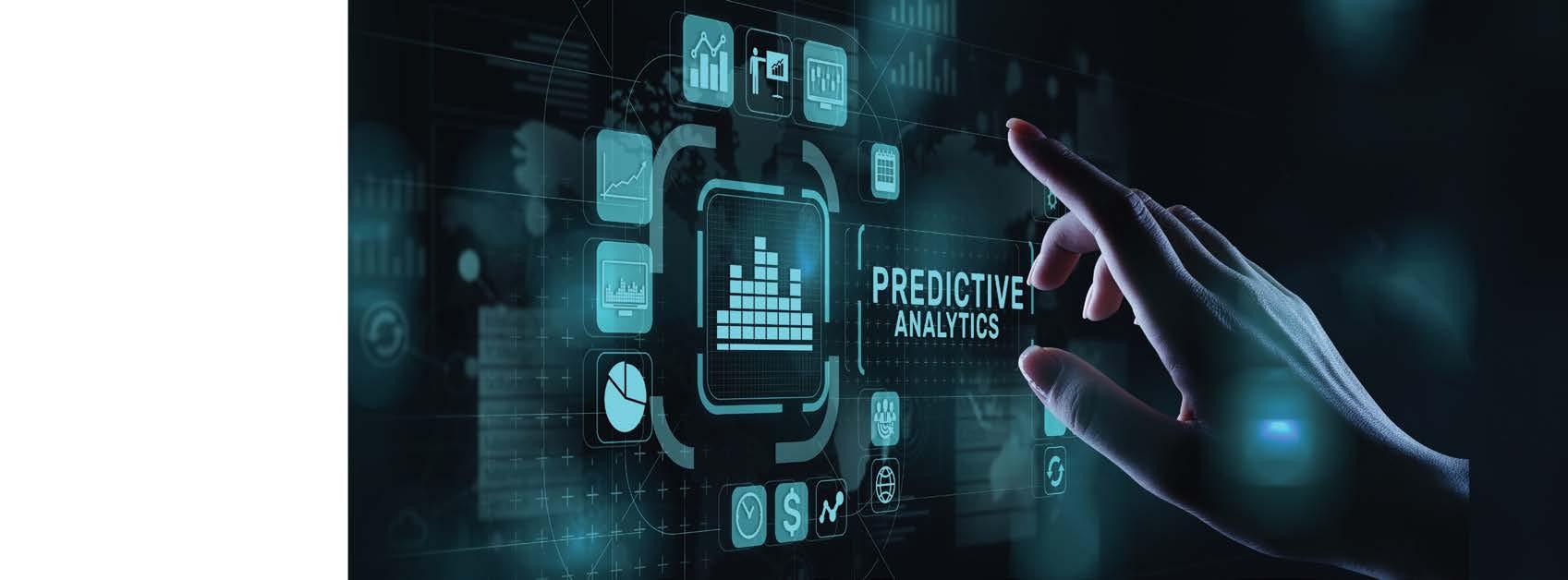



















From its humble beginnings in suburban Adelaide in 2004, Workzone Traffic Control has grown to become one of South Australia’s largest and most respected specialist traffic control businesses. Indeed, with a staff of over 260 traffic controllers and support staff, and a fleet of more than 60 specialist vehicles servicing clients from its seven locations across South Australia and the Northern Territory, the Workzone Traffic Control of today has truly become, and continues to forge a reputation as, a trusted and respected company.
Together with the almost exponential growth of its traffic control operations, the past 18 years have also seen the company spawn two additional divisions (Workzone Training and Workzone Safety & Signage), as well as a separate business in the Northern Territory (Workzone Territory).
Not surprisingly, one of the keys to the company’s outstanding success and growth has been its focus on providing innovative, high-quality solutions that enhance safety for workers and road users alike.
Workzone Traffic Control Key Accounts Manager, Luke Stephens, explained: “Put simply, for us, it always has been and always will be ‘all about safety’. It’s the foundation on which our Managing Director Andrew White built the business, and it remains at the core of everything we do.”
“Back when Andrew started in the business in 2004, the industry was in its infancy,” Luke added. “But even in those early
days – thanks to his background in production where automation, business management and quality control were everything – he saw a massive opportunity to implement systems and improvements that would not only aid the business but would also help to optimise safety for our clients, our staff and road users alike.”
Not surprisingly, this focus on innovation and quality extends to all aspects of the business, including training, methodology and equipment. Workzone utilises a range of innovative traffic control equipment, including PortABoom remote boom gates for pedestrian and worksite protection, as well as radar speed displays and Truck Mounted Attenuators (TMAs) to improve safety at worksites along both metropolitan and rural regional roads.
Building on the success of its first Scorpion® II MASH TL-3 Truck Mounted Attenuator (TMA), Workzone Traffic Control recently added two new Scorpion® TMAs to its fleet. Together with a second TL-3 unit, the company has also taken delivery of a new Scorpion® METRO MASH TL-2 TMA.

Specifically designed to improve safety for worksites in speed zones of up to 80km/h, the new unit is not only the first TMA of its type to be deployed on South Australian roads, it is also one of the first in Australia to be built around the Hino 300 HYBRID cab chassis.
Speaking about the new units, Managing Director Andrew White, commented:
“Our commitment to safety is second to none, and TMA trucks are playing an increasingly important role in the company’s fleet.”
“A1 Roadlines has become an important strategic partner and we rely on the quality and service they provide us, particularly through the Scorpion range,” Andrew said. “The new Hybrid TMA truck is a gamechanger in more ways than one.”
“We’re extremely proud to have the first MASH TL-2 certified TMA in South Australia,” Andrew said, “especially given that it’s mounted on a hybrid-powered cab chassis.”
“Together with our obvious focus on providing our customers with the highest level of site safety, another of our other primary goals is to reduce the environmental impact of all aspects of our business –particularly when it comes to our overall carbon footprint. The new Scorpion METRO TMA delivers on both fronts,” he said.
“Not only does it provide the ideal combination of compact size, reliable performance and MASH-certified TL-2 Plus protection in speed zones up to 80 km/h, the Hybrid powertrain also helps to deliver a significant reduction in CO2 emissions when compared to a traditional Diesel-powered cab chassis unit.”
“What’s more, as with the larger TL-3 units, the Scorpion METRO is also helping to deliver a significant boost in productivity for our clients,” Andrew added.
“Put simply, for us, it always has been and always will be ‘all about safety’.”
“For jobs such as roadside power connections along suburban roads and streets - which make up a large percentage of our work through SA Power Networks - deploying the TMA to provide vital protection for their people in the work zone, as well as high-visibility warning signage for approaching vehicles, is significantly faster than setting up and dismantling a traditional work zone.”
Supplied by Scorpion’s exclusive Australian distributor, A1 Roadlines, the new Scorpion METRO TMA provides MASH TL-2 Plus rated protection from an impacting vehicle weighing up to 2,270kg, travelling at 80km/h and with an impact angle of 25° degrees.

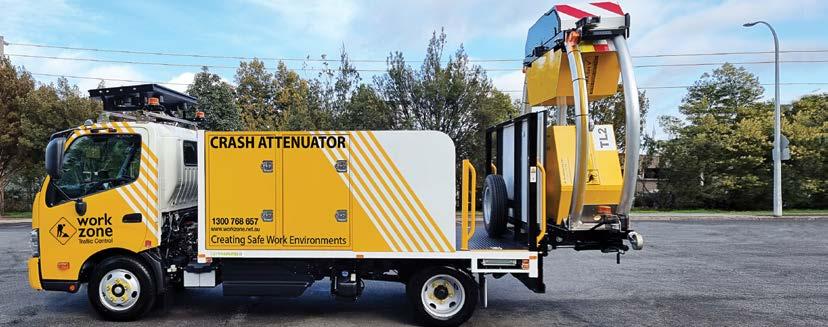
Importantly, as with the larger TL-3 unit,
the Scorpion METRO TMA has been fully tested and certified to current MASH (Manual for Assessing Safety Hardware) Standards.
In fact, the Scorpion METRO is not only the first TL-2 TMA to be fully tested and approved to the latest MASH Standards, it is also currently the only TL-2 Truck Mounted Attenuator to be successfully TESTED, PASSED & ELIGIBLE to the current MASH Standards.
“Needless to say, with the ASBAP (Austroads Safety Barrier Assessment Panel) guidelines now requiring all new TMAs sold for use in Australia to be tested and approved to MASH Standards, the fact that it is fully MASH certified – together, of course, with the performance and quality of our other Scorpion TMAs – were critical factors in us choosing the Scorpion METRO unit for our fleet,” Luke Stephens said.
Built around a Hino 300 Series 616 Hybrid 4x2 Chassis, the new Scorpion METRO delivers the ideal combination of safety, performance and fuel efficiency.
Powered by Hino’s N04C four-cylinder engine and a 201V AC Synchronous electric motor, the hybrid driveline delivers a combined 150hp and 470Nm of torque from a very low 1000RPM. It is also the first Japanesemanufactured light-duty truck in Australia to meet Euro 6 exhaust emissions standards.
The unit also includes Hino SmartSafe, a comprehensive safety package found in all 300 Series 4x2 trucks. The SmartSafe package incorporates a range of safety features including a Pre-Collision System (PCS) with autonomous braking, Pedestrian Detection, Lane Departure Warning System (LDWS), Vehicle Stability Control (VSC) and Reversing Camera with audio.
“Our commitment to safety is second to none, and TMA trucks are playing an increasingly important role in the company’s fleet.”
In keeping with the company’s commitment to the four key pillars of Social, Environmental, Cultural and Economic Sustainability, Workzone also places a strong emphasis on engagement with First Nations communities throughout South Australia and the Northern Territory – including providing employment and training opportunities. In fact, First Nations’ peoples currently account for over 12% of the company’s workforce, and this number is expected to continue growing as the company expands.
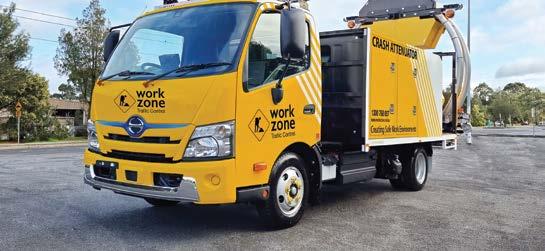
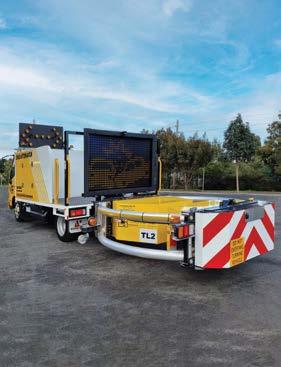
This commitment to working with First Nations communities was highlighted in May 2021 at the official opening of the company’s new headquarters in Hendon by the Hon Corey Wingard MP, the then South Australian Minister for Infrastructure & Transport.

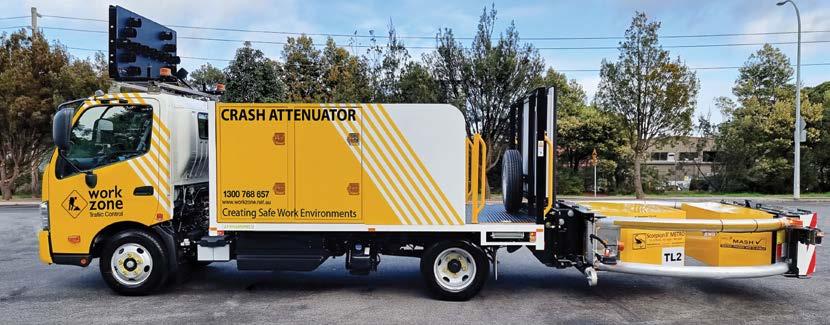
The centrepiece of the opening event was a Smoking Ceremony conducted by Jack Kanya Kudnuitya Buckskin, a proud Kaurna, Narrunga and Wirangu man born in the Adelaide Plains region. Jack is widely regarded as one of the foremost experts in Kaurna language and culture.

Kaurna Meyunna are the Traditional Custodians of the Adelaide region whose traditional lands include the Adelaide Plains of South Australia. Kaurna Meyunna Yerta the Kaurna peoples’ traditional tribal land, or Country, extends from Cape Jervis to the south of Adelaide to Crystal Brook to the north, and from the Mount Lofty Ranges to the coast of Gulf Saint Vincent. Kaurna, the language of the lands and waters of Tarntanya (Adelaide) and surrounds, now functions as an auxiliary language alongside English, where its emblematic role is paramount.
A smoking ceremony is an ancient aboriginal custom in Australia that involves burning various native plants to produce smoke, which has cleansing properties and the ability to ward off bad spirits from the people and the land and make pathway for a brighter future. The ceremonies are unique to each region and use local plants and materials.
Smoking ceremonies are a gesture of goodwill, bringing people together. Performing the ceremony for another is considered a gift and a blessing. Smoking ceremonies can also be a way of connecting with Country by speaking to and acknowledging the ancestors.

Global Road Technology launches its SMART Dosing Units worldwide to help improve dust control along haul roads
Dust control specialists Global Road Technology (GRT) is making automation a core focus of its product offering for the mining sector worldwide with its SMART Dosing Units (SDU) being launched globally as governments call for tighter controls around dust pollution.
Tested in some of the world’s harshest environmental conditions on mine sites in the Australian outback, the SMART (Sustainable, Mining, Autonomously, Reporting Technology)
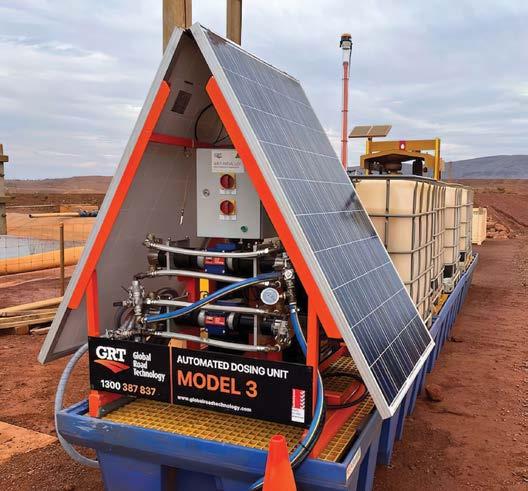
Dosing Units are now seeing action in countries across Africa, Mexico and Brazil as mining companies seek to better manage haul roads through more efficient dust control methods.
Designed and assembled by GRT’s engineers, these Australian Made SMART Dosing Units consist of a central control and communication module combined with electrical and mechanical hardware that provides the ability to remotely control and automate product dosing, error detection, and flow rates - using the Internet of Things (IoT) technology.
For GRT Managing Director Troy Adams, this investment in automation is intended to provide resource companies with a turnkey dust control solution intended to protect onsite
workers and communities located nearby.
“Our products are designed to provide resource companies the ability to stop the spread of dust particles generated by mining activity and the SMART Dosing Units take it to the next level by using data and automation to help in mitigating particulate pollution,” said Mr Adams.
“GRT’s dosing units are equipped with technology to allow for remote management and communication between units to ensure the correct amounts are distributed across the site minimising wastage and maximising efficacy. We have designed products like GRT: Haul-Loc and GRT: Activate that dovetail into these autonomous systems, to deliver effective dust control, and provide critical data currently missing onsite.”
This offering is designed to replace traditional water-based methods employed by miners to manage mining dust as governments around the world tighten legislation to reduce dust pollution. This tighter legislation is driving the growth of the dust suppression industry which is expected to become a US$8.56 billion sector by 2032.
As an international, engineering technology company focussing on providing innovative products and solutions for the mining, civil, agricultural, resources, land development, and environmental management sectors,
GRT is investing significantly in R&D, digital transformation and innovation to make it a leader in dust pollution reduction.
This is being led by the philosophy that digital transformation can help drive efforts to protect mining workers, communities and the environment from dust pollution; while increasing efficiencies and driving productivity via increasing information flows across the mine-site to minimise accidents due to poor visibility or closures due to high levels of harmful airborne particulates.
Its specialisations in dust control, soil stabilisation, erosion control, and water management and investments in innovation have helped to build its reputation as a global leader in dust suppression and reducing particulate pollution caused by mining and construction activity.
GRT is releasing the SMART Dosing Units at a time when the legislative environment across Australia is helping to drive better onsite management of dust pollution as major mining companies need to properly demonstrate that they are proactively reducing the spread of harmful airborne particulates.
“Our learnings from the harsh environment that many of Australia’s mine sites operate in, combined with tighter government controls is driving us to develop world-leading products that can be used by mining companies across the world as companies seek to reduce dust pollution,” Mr Adams said.
“In addition to accurately dosing our dust control products, our latest SMART Dosing Units include telemetry which acts as a data hub and allows for direct reporting, tracking, and control of dosing, with a customised client dashboard. This powerful data includes water consumption, water truck operational efficiency, water truck efficiencies, product levels, dosing rates and the overall working effectiveness of the supporting apparatus (including pumps and power units) used to provide these services.”
For more information, visit: https://globalroadtechnology.com
GRT is an Australian-owned company with an international footprint that provides revolutionary solutions to deliver better and safer infrastructure and operational outcomes across the roads, resources, and rural sectors.
GRT products and applications have been developed by their team of engineers and scientists, working in partnership with leading industry and academic institutions. GRT’s technology can be applied across a broad range of materials and environments to create durable, safe, and sustainable infrastructure and operations.


MasterSuna® RCT 323 from Master Builders Solutions provides a fast, efficient and extremely easy-to-use recycling solution for returned ready-mixed concrete waste into high qaulity road base material.
Simply add the dissolvable, water-soluble bags directly into the agitator drum of the concrete truck, spin it up for 60-90 seconds and empty it out. Next day, you’ll have a high quality gravel like material which breaks up extremely easily and is ideal for use as road base, construction backfill, or any number of applications. Call us today on 1300 227 300 or scan the QR Code for more information.
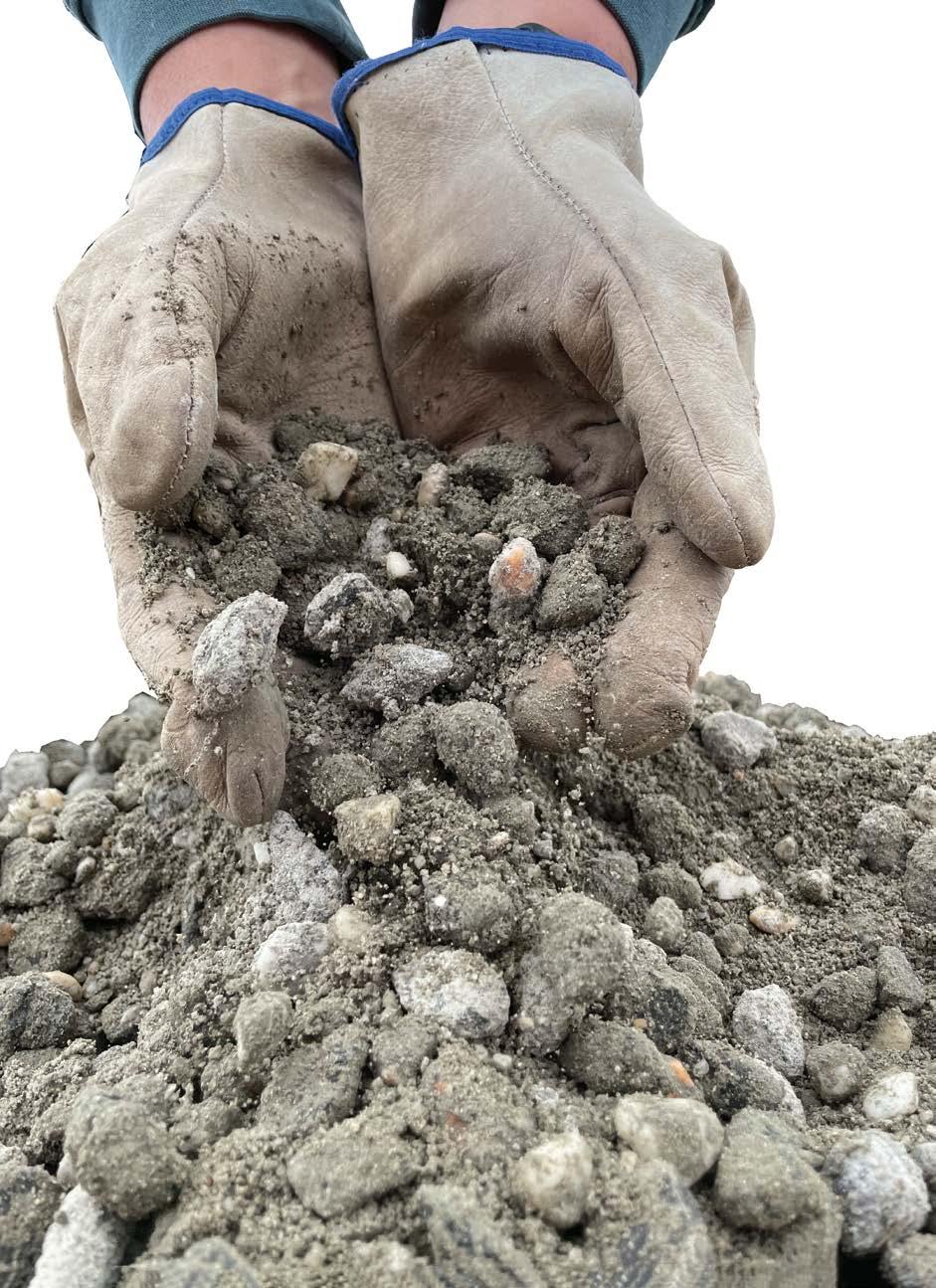
CPB Contractors, a member of the CIMIC Group, has been selected by the Victorian Government as part of the preferred consortium to deliver a major works package for the Melbourne Airport Rail project.
CPB Contractors, in a joint venture with John Holland Group and Alliance partners AECOM, Alstom, KBR, Metro Trains Melbourne, V/Line and Rail Projects Victoria, has formed the Sunshine Systems Alliance and will soon begin works to deliver the first major package of works for the Melbourne Airport Rail project.
The Melbourne Airport Rail will provide passengers with an around 30-minute trip between the airport and Melbourne’s CBD and will facilitate connections to the regional and metropolitan rail network.

CIMIC Group Executive Chairman Juan Santamaria said: “We are excited to have the opportunity to contribute our infrastructure expertise to the Melbourne Airport Rail project, which is a transformative project
for Victoria, providing the first connection between Melbourne Airport and the state’s regional and metropolitan train network. This is city-shaping infrastructure that will generate significant economic benefits for the people of Victoria.”
CPB Contractors Managing Director Jason Spears said: “Our teams in Victoria have demonstrated significant rail expertise on brownfield projects such as the Melbourne Metro Tunnel Project’s Rail Network Alliance and the Caulfield to Dandenong level crossings removal project. Our people are experts in construction and are committed to ensuring Melbourne Airport Rail is delivered safely, to schedule and with minimum disruption to local communities.”
The scope of works includes major improvements to Sunshine Station including a new, accessible second pedestrian concourse, a new forecourt area and carpark improvements to Albion Station, construction of an elevated flyover at Albion separating
airport trains from metropolitan and regional services, relocation and implementation of rail systems, modifications to substations, and protection of existing utilities and services.
CIMIC Group is an engineering-led construction, mining, services and public-private partnerships leader working across the lifecycle of assets, infrastructure and resources projects. CIMIC Group comprises our construction businesses CPB Contractors, Leighton Asia and Broad, our mining and mineral processing companies Thiess (joint control) and Sedgman, our services specialist UGL and our public-private partnerships arm Pacific Partnerships – all supported by our in-house engineering consultancy EIC Activities. Our mission is to generate sustainable shareholder returns by delivering innovative and competitive solutions for clients and safe, fulfilling careers for our people. With a history since 1899, and around 24,000 people in around 20 countries, we strive to be known for our principles of Integrity, Accountability, Innovation and Delivery, underpinned by Safety.
Concept image of the planned Melbourne Airport Rail station at Tullamarine Airport.







New structural bearings capable of supporting more than 1,600 tonnes of compressive load per set are being introduced by Hercules Engineering for extremely highstress applications.
The latest Herculon HLD-FF 8000 sliding bearings – which can be used in sets of two – incorporate a sliding layer of globally proven fibre-reinforced and incompressible H-Glide engineering plastic with excellent friction coefficients from 0.05 – 0.1. Such outstanding sliding characteristics and load-bearing performance – even in compact or wet spaces – are invaluable to infrastructure developers, engineers, architects, and specifiers because lower coefficients of friction will transfer less stress onto the load-bearing structural components as the bearing does its job of protecting them against surrounding movement, says the Hercules Engineering Manager, David Booty.
The new HLD-FF bearings are the largest H-glide bearings the company has ever made, though even-larger capacity bearings can be custom-manufactured for extremely long low-maintenance life spans of up to 100 years typically requested by industry.
“With their incompressible H-Glide sliding layer, these bearings can withstand extreme point pressures of 350-500 megapascals,
“This remarkable performance – which is up to 40 times greater than conventional water-resistant and non-lubricated fibre-reinforced elastomeric bearing pads – is complemented by the material’s ability to function well in a variety of environments including, but not limited to, damp or underwater applications,” says Mr Booty Applications range from compact high-stress commercial, industrial and resources applications involving architecture and design, construction, infrastructure, energy, food and beverage, mining, manufacturing, maritime, oil and gas, safety, water and wastewater applications and other uses involving exposure to aggressive environments.
“A major advantage of this type of composite bearing is that they do not require lubrication, which minimises any disruption to processes,” says Mr Booty. “H-Glide bearings’ already excellent lifespans can be increased by the use of a mirror polished stainless steel sliding plate. Absorption of water and other fluids is negligible. The material is virtually inert, reactions with food and cleaning substances, for example, almost never occur,” he says.
Herculon Type D Free Float Bearings (HLD/FF) have been developed to fulfil the need for a low-friction bearing on corbels and columns where a continuous slip joint is inappropriate. They can beams and slabs and also under ducts, conveyors, pressure vessels and small span bridges.
Herculon Type D Free FloatBearing HLD/ FF consist of a mild steel top plate to which a polished stainless steel facing plate is attached. This plate slides against a H-Glide Composite Bearing Pad which in turn is bonded and recessed into a mild steel base plate (recommended but optional).

Custom-fabricated for extreme loads, Herculon structural bearings - including these HLD-FF 8000 types designed for concrete – incorporate Hurculon’s highperformance H-Glide technology.
Hercules Engineering’s standard ranges of Herculon™ structural bearings and Hercuslip™ composite slip joints are widely proven product designs that have performed over decades since 1972 in applications ranging from landmark metropolitan construction projects, through to major international industrial and resources projects. The new custom bearings that incorporate H-Glide are a new extreme performance addition to Hercules Engineering’s easily installed and cost-effective range of products that gives architects, engineers and specifiers a high-performance and more
The H-Glide bearing pad is available in different formulations, including conductive materials. It is equally suitable for a wide variety of high-load structures requiring extreme load-bearing capability combined with non 'stick-slip' behaviour, where static and kinetic
“By using new generation composite formulations, H-Glide bearings allow the highest loads, with ultra-low wear rates and friction values,” says Mr Booty. “The material is resistant to a majority of common industrial chemicals and environments, whether it is immersed in water or used in dry applications, or anywhere in between, from freezing to tropical conditions.”
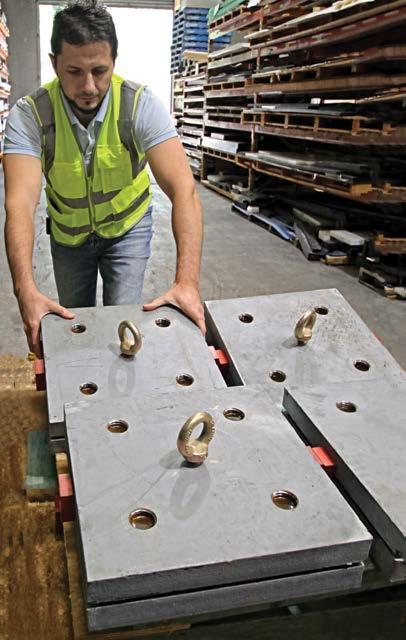
For further information, please contact David Booty,
Hercules Engineering has provided a wide range of cost-efficient engineering devices, sliding joints, bearings and seismic dampers to help protect and extend the longevity of landmark buildings, major industrial structures and bridges in Australasia, the Asia-Pacific and Africa.
These include long-lasting products for use in signature structures as diverse as the Sydney Opera House, the Hang Seng bank in Hong Kong, Australia’s New Parliament House in Canberra and the world’s largest copper mine, Kansanshi, in Zambia and the world’s tallest building, the Burj Khalifa in Dubai.

The company provides bearing and sliding joint solutions for optimum cost-efficiency and durability for structures ranging from hospitals and shopping centres, carparks, transport terminals, office towers and warehouses through to factories, storage tanks, silos, boilers, bridges and industrial and resources plants.
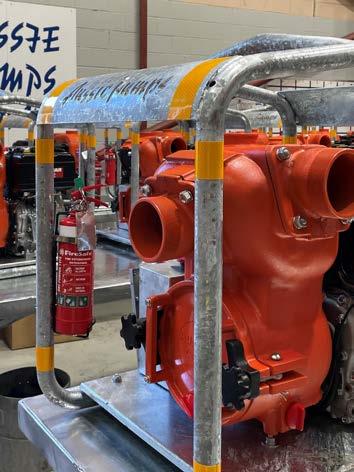
Hercules Engineering can provide technical advice for technologies required for different types of structures located across areas of widely differing climatic and geographic diversity, ranging from the arid Australian Outback to Africa, Melbourne to Brunei, in tropical and maritime conditions.

‘One-size-fits-all’ products are commonplace in the construction industry, especially when it comes to structural bearings and joints. However, such approaches can commonly lead to wastage, low-quality results, and parts being replaced far too often.
As an industry, I believe that we should be striving instead for custom solutions designed and manufactured specifically for clients’ design models. The improvements to safety, efficiency, and sustainability as a result of custom solutions far outweigh the time and effort involved, especially when measured over the long term.
One example of custom solutions came about for mageba in July 2020, when an Australian mining giant released a tender opportunity for the supply of Australian-designed and manufactured spherical bridge bearings. The custom bearings were for a multimillion-dollar, multistage rail project in the Pilbara region of Western Australia.

The client’s existing bearings had deteriorated faster than projected by the previous supplier, and as a result, needed a new supplier who could fabricate long-lasting, reliable and high-quality bridge bearings.

Without the bearings, the rail bridge leading to the mining site would not be functional and any rail shutdown would lead to significant financial loss for the client. To put things in perspective, the average mining train carries around $26 million of iron ore, and they run about 35 to 40 trains each day. One single day of disruption equates to billions of lost dollars.
mageba knew that a custom solution was necessary and went on to design and fabricate 240+ bearings locally. Custom solutions require custom packaging, so the mageba team also designed and created heavy-duty pallets to carry the bearings, which were packed with additional elastomeric packers to ensure they retained structural integrity throughout the journey.
Critically, the project proved the importance of custom solutions in an environment filled with supply chain disruption and delivery issues. Due to steel shortages and delayed shipments currently being experienced around the world, mageba called upon its extensive network of trusted partners and suppliers to ensure all materials were procured in record time.
megaba supplied custom bearings for a multimillion-dollar, multi-stage rail project in the Pilbara region of Western Australia.TOP: Installing one of the bearings along the Pilbara rail bridge.

ABOVE: The bearings are load tested to ensure performance.
Looking forward to the future, custom design opens up a whole new world of innovation in the construction industry. The future of construction is one in which designers are free from the limitations of a single product catalogue from their supplier.
Without the limits of a one size fits all approach, engineers will be able to design more freely, in order to create structures with wider spans, higher loads, and better efficiency. Thanks to the flexibility inherent in custom products, we’re able to improve on a huge range of areas, including durability, longevity, and ease of installation. Safety is massively improved, with any risk of collapse or failure due to faulty bearings significantly reduced.
Sustainability is another important factor. Custom designs are less likely to deteriorate, reducing the need to be replaced so often. Fewer replacements mean significantly fewer carbon emissions, with a huge reduction in the waste and energy required to create and install the replacements.
Whichever way you cut it, I believe that moving away from the “one size fits all” approach is a huge positive for our industry. With supply chain issues set to continue for the foreseeable future, the ability to design and create custom products locally is an ongoing benefit for the entire industry - and our country as a whole.
mageba Australia engineers and manufacturers

for Australia’s largest
and structural
buildings and
It tailors the design and manufacture of products to each project and manufactures most of these products locally.
Part of the Swiss-owned global mageba Group, mageba Australia has designed, manufactured and fitted solutions for projects across Australia, with highlights including the Sydney Opera House, the Gateway Bridge in Queensland, the Swan River Pedestrian Bridge in Perth, and the West Gate Tunnel in Melbourne. Visit: https://www.mageba-group.com/au/en/
Did you know you can access the latest issue of Highway Engineering Australia via Informit?
The Informit Engineering Collection is an ever expanding resource covering aspects of highway engineering - planning and development, design, construction, maintenance and management. The database offers an extensive variety of resources including journals, trade publications, reports and conference proceedings.
The Collection guarantees quality through partnerships with peak professional bodies including Engineers Australia and the Institution of Professional Engineers New Zealand, as well as Content Providers including EPC Media Group.

The Informit Engineering Collection delivers hard to find content designed to complete and complement your highway engineering requirements.

Other key titles published by EPC Media include: Construction Engineering Australia Waste + Water Management Australia
Request a quote or free trial via www.informit.org/trial-and-quote
No matter what field or industry you work in, there are skills that can be used in almost any workplace.
It’s not enough to simply know and understand your specific discipline and job role – you also need more expertise around things like project management, an understanding of finance, and digital skills.
Here are five webinars you can stream right now to help you build those skills:

Believe it or not, most human beings aren’t great at learning. Despite our best intentions, we often undertake strategies that are either inefficient or ineffective. This video explores several principles of human learning that will help you move quicker and easier through the learning process. This, in turn, will help you move faster than others when tackling a new job, a new position, or a new project.
During your working life, you will face many challenges and difficult decisions, with many variables that influence your decisionmaking.
Clear purpose and values form the basis of informed decision-making. Purpose is what inspires you and gets you to work each day, and your values are your guide that hold you accountable to your purpose.
But how can you work out what these are?
In this webinar, speaker Nigel Sutton will guide you through tools for discovering
your purpose, exploring your values and converting values from words into actions.
Emotional intelligence is the ability to understand, use and manage our emotions and recognise the emotions of others. It is a particularly useful skill in helping to develop successful interpersonal relationships with colleagues and stakeholders which in turn help you achieve and grow professionally. This webinar will help you build your emotional intelligence skillset, and will be useful to you if you:
• Need to build your emotional intelligence to anchor why you do what you do and build a value compass to guide you into the future;
• Need a quick hack to connect with people that actually works;
• learn the language that builds instant rapport with the person you are talking to;
• want to explore the truth behind who you think you are, who you want others to think you are and who your really are, to build your authenticity.
Trust and likeability are just two of the keys to networking and building relationships with colleagues and clients. But how do you present the real you while also cultivating rich relationships that benefit you or your business?
Find out how to create a memorable and positive impression, identify opportunities for networking, explore what you can offer and what you want to gain, and develop your network with integrity.
This session will give you tips and tricks to start networking and growing your influence with stakeholders at your next event or meeting. It will be beneficial to those who are new to networking or would like to be more successful in their approach.
In the fast-paced world we live and work in, prioritising and self-management are key to success, building relationships and achieving results.
This session focuses on how to improve managing yourself and your time, to enhance your productivity, effectiveness and wellbeing.
Access career-changing resources like these and more with an Engineers Australia membership.
For a limited time, you can access over a hundred hours of the latest and most popular video content and presentations with a FREE 1-MONTH TRIAL.
Scan the QR CODE or visit: https://l.ead.me/ EAhea1122


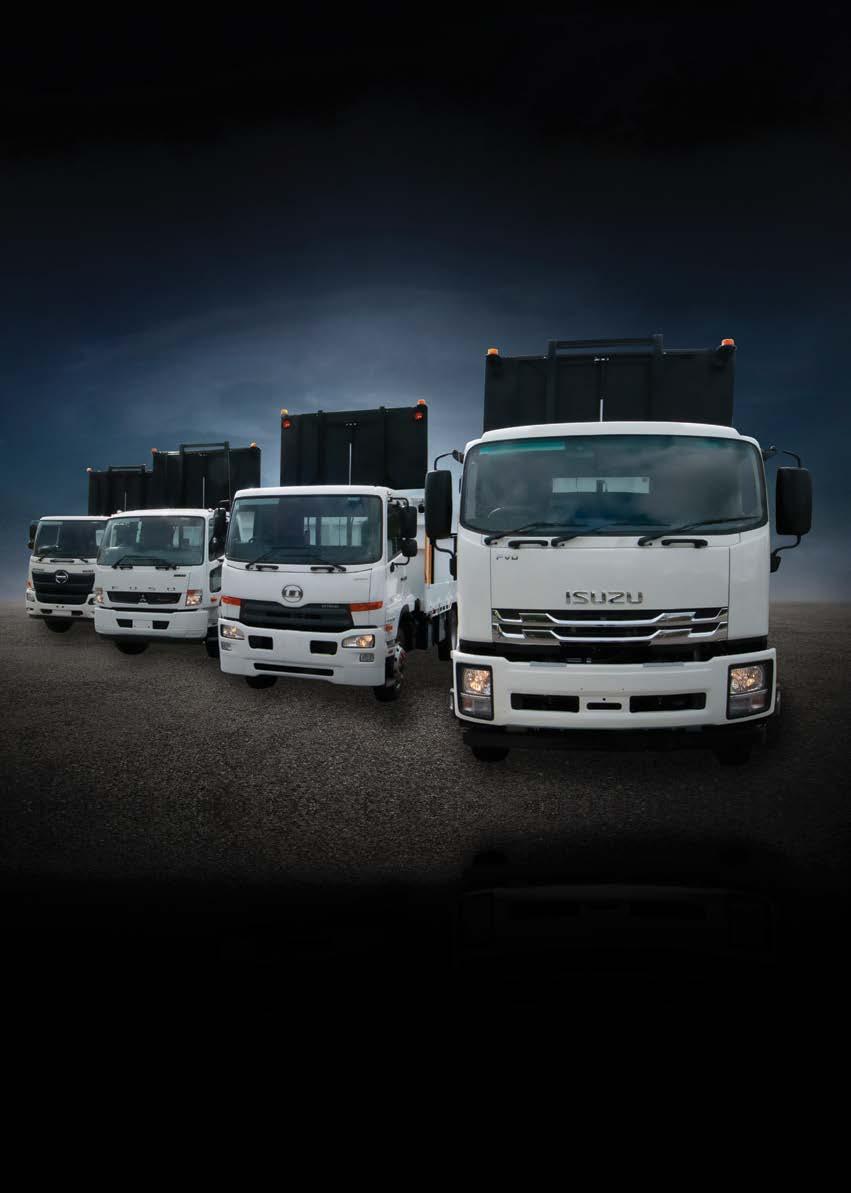



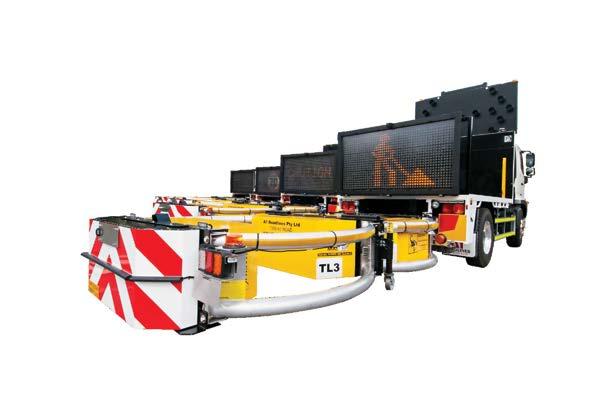

harshest method of testing the
Attenuator (TMA) during an impact.
Rather than relying on some of the impact energy being absorbed by the forward movement of host vehicle on which the TMA is fitted, with ‘Infinity Testing’ the host vehicle is anchored to the ground to prevent any forward movement during an impact.

Compared to standard testing with an unrestrained host vehicle, Infinity Testing is a much tougher testing regimen. It is considered ‘worst-case scenario’ testing which makes it much more difficult to meet the pass criteria for IS values, as all of the Ridedown Acceleration must be provided by the TMA absorbing the energy from the impact.
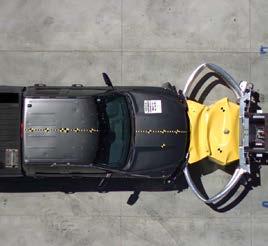


TMA ABSORBS & DISSIPATES 100% OF THE IMPACT ENERGY Testing the TMA on a host vehicle which is anchored in place, tests – and for both the Scorpion II® TL-3 and Scorpion® II METRO® TL-2 TMAs – confirms the capacity of the TMA to absorb/dissipate 100% of the impact energywithout the benefit of the host vehicle roll-ahead.
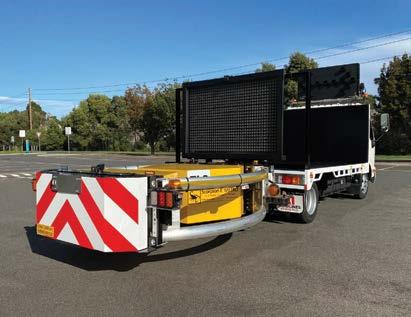
From a practical standpoint, the fact that both the Scorpion II® TL-3 and Scorpion® II METRO® TL-2 TMAs were successfully tested to MASH Standards using the ‘Infinity Testing’ method, means both units are MASH certified with no upper weight limit for the host vehicle.




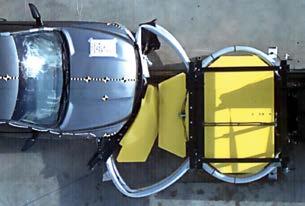
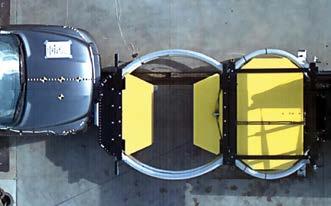
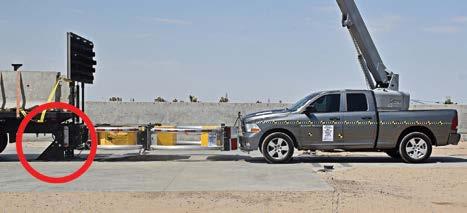

The Vögele product portfolio of road pavers enables users to cover practically any application in asphalt paving. The range of screeds is correspondingly broad, covering twelve models in up to five different compaction variants.
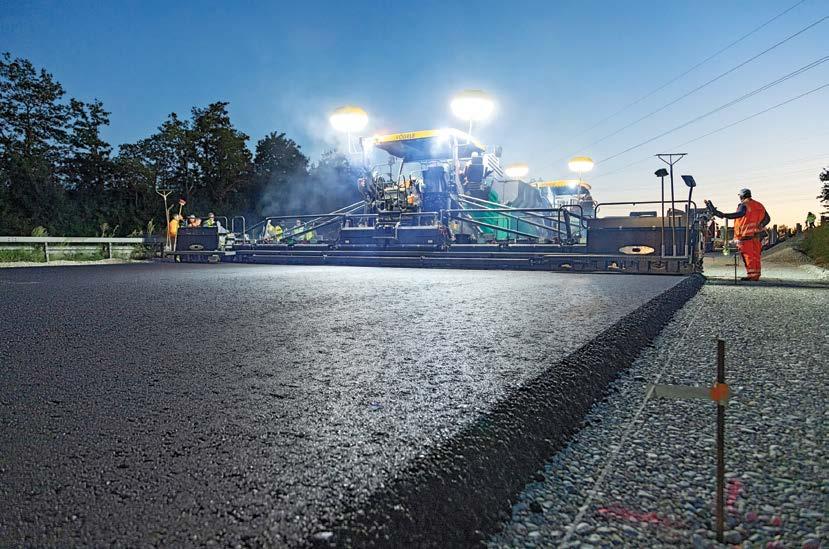
They manage pave widths between 0.5m and 18m and layer thicknesses from a few centimetres to half a metre: screeds are a core competence for Vögele. Whether the project is paving a footpath or cycle path, rehabilitating a public street or completing a motorway, when high-speed working and precision are key, Vögele pavers and screeds enable paving crews to master a wide variety of requirements.
What all Vögele screeds have in common is the proven electric screed heating system. It gets all parts in contact with the mix, such as the screed plate and the compacting systems, up to temperature quickly and evenly. Vögele also places great importance on simple, intuitive operation. On Classic Line pavers, this is achieved through the ErgoBasic paver operator’s consoles and on Premium Line pavers, through the ErgoPlus 3 screed operator’s consoles. Both operating concepts are based on the same principle, simplify work and allow switching between different screeds without the need for induction.
Vögele extending screeds are particularly adaptable, enabling them to manage varying widths and winding roads. They cover a huge range of pave widths ranging from 0.5 m (with cut-off shoes) to 9.5 m (with
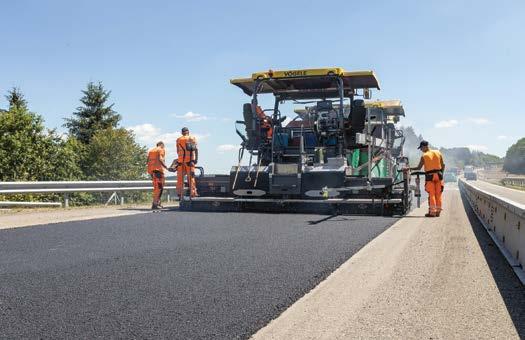
Vögele extending screeds are particularly variable, enabling them to manage even job sites with frequently and significantly varying pave widths.
bolt-on extensions). The operating principle of all extending screeds is the single-tube telescoping system. Even at maximum extension, the three-part, generouslyproportioned telescopic tube is still clamped along half its width, providing optimum stabilisation.
Vögele fixed-width screeds combine high laydown rates with pave widths of up to 18 metres.Fixed-width screeds deliver high-quality, even results, as they are characterised by a high degree of rigidity which allows them to pave surface courses up to 18 m wide without joints. Hydraulic bolt-on extensions also give users of fixed-width screeds room for manoeuvre to vary pave width by up to 1.25 m on each side.

Vögele supplies screeds with a variety of compacting systems: the suffix “V” is for screeds with the "vibrators” compacting
system, whilst “TV” means an additional tamper and “TP1” and “TP2” stand for highcompaction screeds with one or two pressure bars.
The tamper actively tamps the mix under the screed plate, therefore ensuring that the layer of asphalt is pre-compacted to a significant degree. A correctly set tamper is of key importance for the compaction result and for the floating behaviour of screeds. As it is a complex process to adjust the tamper stroke mechanically, it is often not adjusted at all, which is why Vögele developed the hydraulic tamper stroke adjustment system. This system
enables paver operators to set the ideal tamper stroke for the task in question quite simply at the touch of a button: on the latest screeds, the touch of a button on the paver operator’s console switches to a 4 mm or an 8 mm stroke.
Pressure bars driven by pulsed-flow hydraulics are the core of High Compaction Technology. This is the technology that enables screeds of the TP1, TP2 and TP2 Plus variants to achieve the greatest possible compaction performance. The highest-performing screeds are the AB 500 TP2 Plus and the AB 600 TP2 Plus. These are used mainly on the InLine Pave train. During the rehabilitation process, the binder course and the surface course are paved one immediately after the other. In this case, the high compaction screeds compact the binder course at values of up to 98% –without rolling.
For further information on the Vögele product range, visit: https://www.wirtgengroup.com/ocs/en-au/voegele
 Extending screed (left) and fixed-width screed (right) from VÖGELE: the company supplies these key technical components of SUPER road pavers in twelve different variants.
Extending screed (left) and fixed-width screed (right) from VÖGELE: the company supplies these key technical components of SUPER road pavers in twelve different variants.
Transition Test #1 for 2270kg Ute
The DOLRE bridge tra c barrier development demonstrates how the incorporation of FEA into the design process can optimise a solution that is vastly di erent from the solutions that traditional Engineering methodologies would produce.
Transition Test #2 for 2270kg Ute
Transition Test #1 for 13,000kg Bus
Transition Test #3 for 2270kg Ute
A problem was identified and through the iterative use of FEM combined with Eurocodes for structural analysis a solution was found and optimised that was vastly di erent to the direction that traditional engineering was leading.
Transition Test #1 for 900kg Sedan



Once the bridge barrier design was optimised, the same process was used to assess transition designs to various European roadside barriers in accordance with EN1317 and TR16303-2011 requirements.
Australian authorities required product assessment to Australian bridge standards. Future finite element modelling in accordance with MASH standards and NCHRP179 validation requirements satisfied ASBAP’s analysis for both tra c barrier and transition designs.











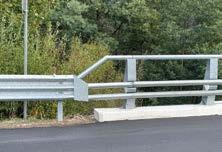

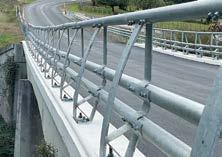
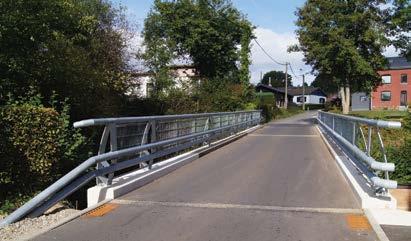









While the combination of increased traffic flows, increased vehicle loadings and the rapidly-changing vehicle mix undoubtedly present some significant challenges for Australia’s aging bridge assets, bridge remediation is not only about load-carrying capacity. Other critical considerations include safety for road users and compliance with the current Australian Bridge Standards and safety guidelines.
In short, even though many road bridgesparticularly those in rural, remote and urban interface areas - are now carrying vehicle numbers well in excess of their original intended design and, as a consequence, are often in urgent need of refurbishment and/ or strengthening works to enable them to cater for these increased loads, not all are at the end of their useful design life. Indeed, for many bridges across Australia, it’s not so much a question of upgrading capacity but rather one of upgrading safety.
DOLRE provides the ideal solution for both situations.
The DOLRE Low Stress Parapet System offers councils, road authorities and other bridge asset owners an extremely cost-effective and efficient method of
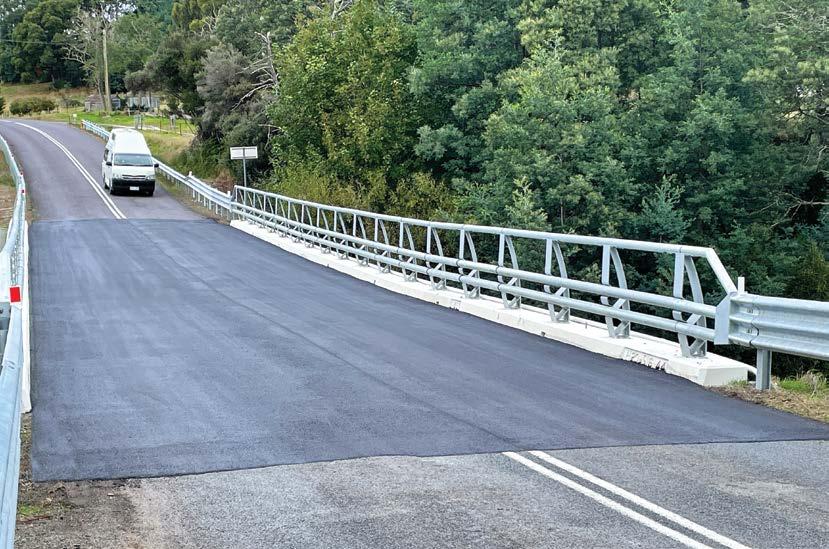
upgrading bridge safety barriers to meet the requirements of the current Australian bridge Standards, without necessarily needing to perform strengthening or remedial works on the bridge deck.
The key to this unique capability lies within DOLRE’s patented ‘low stress’ design which absorbs and redirects the greater majority of the energy generated during a vehicular impact along the length of the barrier – including the transitions and adjacent off-structure barriers - rather than transmitting it directly to the bridge deck. In fact, with the DOLRE barrier, the stresses transferred to the bridge deck during an impact are less than one-third of the stresses created by a conventional barrier.
Developed by Belgian bridge engineer David De Saedeleer, a director of Belgian manufacturer DESAMI, working in conjunction with world-renowned FEA (Finite Element Analysis) specialists GDTech Engineering, the DOLRE Low Stress Parapet System has been crash tested to European Standard EN1317-2 H2 and simulated to USA Standard MASH TL4. DOLRE also complies with Australian Standards AS/NZS3845-2015 and AS51002017 and has been approved by ASBAP for use throughout Australia.
Ideal for bridge refurbishment projects, the DOLRE Low Stress Parapet System provides an ideal safety upgrade solution for bridges that still have residual life in the Bridge Deck but need upgrading to meet the current Australian Bridge Standards. It’s cost-effective and easyto-install and doesn’t require expensive deck strengthening or deck replacement works.
DOLRE also provides the added advantage of being easy to dismantle and remove in times of flood, thereby helping to significantly reduce the risk of damage to valuable bridge assets.
For further information on the DOLRE Low Stress Parapet System, SCAN THE QR CODE or visit: https://dolre.com.au/



SEA Electric is partnering with Air bp on this world-leading project, which sets the standard for environmental credentials and performance, all while showcasing the possibilities of EV technology.
The first all-electric aviation refueller in Australia - an SEA Electric SEA 500 EV which has been designed and engineered in Australia - was put into operation recently.
Built in conjunction with global aviation fuel products and service supplier Air bp and leading aviation specialists Refuel International in Melbourne, the vehicle will be based at Brisbane Airport, uplifting Jet-A1 for business and general aircraft at the busy international airport.
The refueller can carry approximately 16,000 litres of aviation fuel, with all onboard pumps and functions fully electrified, with the management of the systems provided by the proprietary SEA-Drive® power-system. This system has previously been adapted to electrify a wide range of ancillary functions, such as the hydraulic systems found on refuse vehicles, elevated work platforms, tippers and tilt trays, or the cooling units found in refrigerated delivery trucks.
This latest adaptation sees the bulk of the energy for the truck devoted to the fuel delivery task, rather than propulsion for the vehicle.
“SEA Electric is proud to be partnering with Air bp on this world-leading project, which sets the standard for environmental credentials and performance, all while showcasing the possibilities of EV technology,” said Tony Fairweather, SEA Electric’s CEO and Founder.
“Working airside on the tarmac has its own special suite of conditions when contrasted to a delivery truck on the open road, with the energy demands of the vehicle vastly different to the norm, however, leading criteria such as safety and reliability remain imperative.”
“Of course, there are environmental benefits of converting to EV, with CO2 and other exhaust particulates eliminated, which makes for a healthier work environment at airports.
“Furthermore, this is the first step towards an airport becoming a Virtual Power Plant (VPP). Imagine the near-future whereby every Brisbane airport vehicle is battery electric and networked to both renewable sources of energy for charging (such as roof-mounted solar) and also to the grid itself to deploy excess energy when the grid requires it. This is just around the corner.
“Transport makes up a significant portion of total emissions, with the adoption of pioneering EV technology, such as this aircraft refuelling truck, showing a great level of social responsibility,” Mr Fairweather said.

The project is proof that Australian ingenuity and manufacturing is alive and well.
“Air bp has been collaborating with SEA and Refuel International for two years on the custom-designed and specialised electric refueller to meet exacting performance and safety requirements. We are delighted to launch the refueller at Brisbane Airport where
we are responsible for fuelling 30 airlines and approximately 100 flights daily,” said Daniel Tyzack, Managing Director, Air bp Asia Pacific.
“Our work reflects bp’s ambition to become a net zero company by 2050 or sooner and to help the world get to net zero by working with our customers to help decarbonise.”
For Refuel International, the vehicle is the latest in a long line of projects working with Air bp.
“Refuel International are very proud to have developed Australia’s first electric aviation refueller in partnership with Air bp and SEA Electric,” said Geoff Pinner, General Manager for Refuel International.
Details on SEA Electric’s Australian range, its wide array of applications, plus its nationwide dealer network, can be found at www.seaelectric.com/en_au
SEA Electric is an Australian company with a global reach specialising in the assembly and 100% electrification of commercial vehicles worldwide. Dealing directly with vehicle users and working alongside automotive OEM’s, SEA Electric supplies and licences patented technology.
SEA Electric was founded in 2012. After four years of product development and testing, SEA Electric launched its commercial operations in early 2017, triggered by the reduction in battery kWh pricing, allowing for commercial feasibility in offering electric power-system to the global market.
Australia’s largest ever survey of electric vehicle owners has found Tesla drivers are travelling the same average kilometres a year as everyone else.
A survey of 741 Tesla drivers, conducted by the Electric Vehicle Council and the Tesla Owners Club of Australia (TOCA), shows 89 per cent drove more than 10,000kms a year, while 38 per cent exceeded 20,000kms a year.
The national average for all passenger vehicles is 11,100kms annually.
The vast majority of drivers charge their vehicles during off-peak times, suggesting current market offers like time-of-use tariffs are working. The report also found:
• 51 per cent of Tesla drivers were aged between 50 and 69, with just 12 per cent under 40
• Volkswagen and Toyota were the most commonly previously owned car before a Tesla despite the leading EV brand being often considered luxury
• 65 per cent did not have a regular servicing schedule and 41 per cent saved more than $1000 on maintenance costs
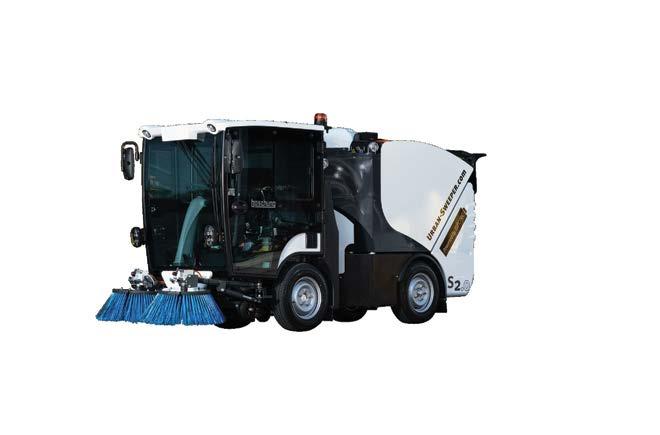

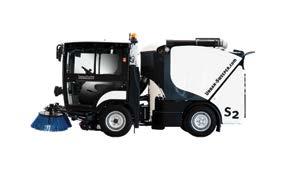

Electric Vehicle Council chief executive Behyad Jafari said the study would be valuable for policy makers trying to boost Australia’s uptake of EVs.
“This study puts another nail in the coffin of the myth that driving range is an issue for EV owners with the vast majority driving the same average kilometres a year as Australia’s average passenger vehicle,” he said.
“We know range anxiety is a major impediment to people buying EVs. This finding is yet another reason showing there is nothing to fear.”
“EV owners are saving thousands of dollars on fuel and maintenance costs. At a time when petrol and diesel prices are going through the roof, the Australian government must introduce
introduced a fringe benefits tax exemption for workplace charging it would help align EV charging with daytime excess solar energy generation.”
Pete Thorne, President of TOCA said: “This survey is an excellent starting point for understanding Australia’s Tesla drivers.”


“With just 12 per cent of respondents aged under 40, there is the need to do more research to understand the preferences of younger drivers who may want to own an EV in the future,” Mr Thorne said.

“Tesla owners are saving thousands of dollars each year on fuel and maintenance costs.”
“We’re calling on federal and state
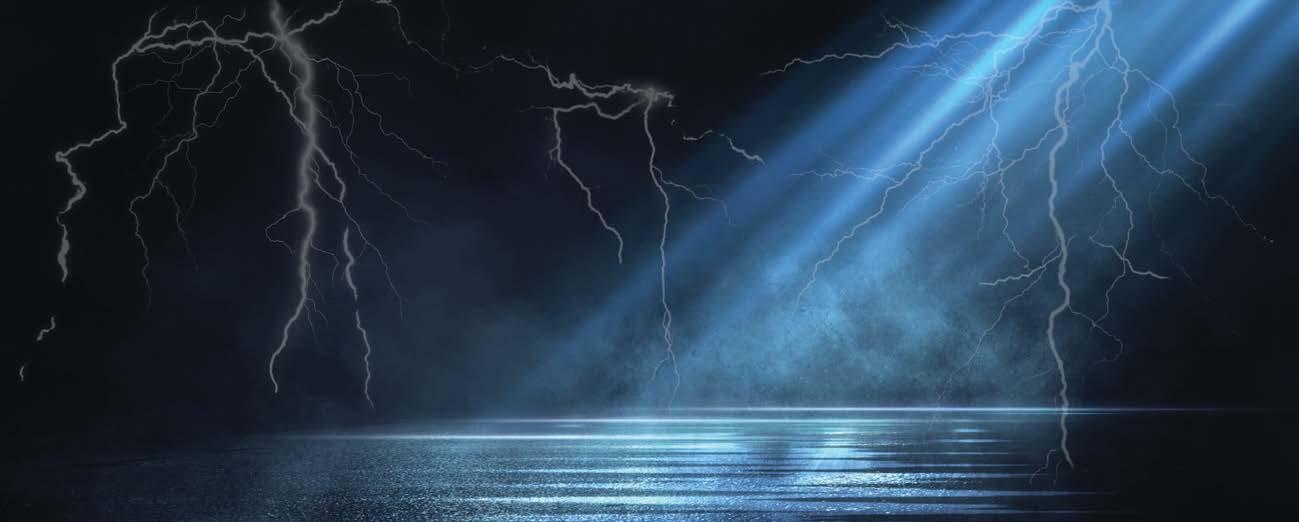
On behalf of the Australian Government, the Australian Renewable Energy Agency (ARENA) has recently announced $871,000 in funding to Intellihub for an Australian first deployment of 50 electric vehicle (EV) chargers installed on street-side power poles for EV owners without off-street parking across New South Wales.
Intellihub will install EV chargers on power poles across nine local government areas in New South Wales to cater for EV owners who live in apartments, townhouses or units that do not have access to EV charging on-site.
Intellihub’s $2.04 million project is supported by Schneider Electric who will provide the EV charging infrastructure, and EVSE who will be managing the charging service. Schneider Electric’s EV chargers will allow for convenient top ups, as well as overnight charging. Origin Energy will supply 100 per cent GreenPower for the project, meaning all of the energy required
to charge the vehicles will be matched with the equivalent amount of certified renewable energy added to the grid.
The nine local councils taking part in the project include Waverley, Woollahra, Randwick, Lake Macquarie, Ryde, Singleton, Parramatta, Northern Beaches and Inner West local councils.
The trial aims to highlight that there are currently no regulatory barriers to using existing infrastructure that already has power running to it, such as street power poles, and will also help to understand the impact of EV chargers on the electricity network.
If the trial is successful, then Intellihub aims to pursue a wider rollout of chargers to more local councils on a commercial basis.
ARENA CEO Darren Miller said power pole charging provided the perfect solution to increasing public EV chargers.
“Not all electric vehicle owners have the ability to charge their vehicle at home, which
is why we’re excited to partner with Intellihub on this trial that utilises street-side power poles, providing a great opportunity to pair with EV charging.

“We look forward to seeing the results of the trial from Intellihub and hope to see it rolled out right across Australia.” Mr Miller said.
Intellihub CEO Wes Ballantine said: “It’s expected that as many as 10 per cent of new car sales in Australia will be electric vehicles by 2025. That equates to an extra 120,000 new EVs on our local streets each year. It’s likely that many of these car owners may be unable to charge their EVs from home,”
“Power poles line most of our public streets and that presents an opportunity for the EV charging market. They’re an accessible, safe, and practical option for EV charging.”
For more information on the project, visit: https://arena.gov.au/projects or Intellihub’s website: https://intellihub.com.au
Intellihub power pole EV Charger. Image Credit: IntellihubWhen the east coast was drenched, flooded towns like Lismore and the Hawkesbury Valley in Sydney got a load of publicity. Emergency Services swung into action, supported by a tremendous effort from the communities involved. Anybody with a boat was “flat out” helping people of all ages, their pets and sometimes even livestock to escape the floodwaters.
What didn’t get any attention was indispensable industries like construction. Worksites were flooded too! It may not be as dramatic as seeing people in trouble but, it certainly stops a site from operating.
With a third La Nina summer in a row officially declared, more rain will likely see a major disruption to infrastructure and construction sites. This will bring costly and more lengthy delays.
The team at Australian Pump Industries recently deployed a 4” heavy duty open impeller transfer pump from the Aussie Pump stock to help a site in need.
The photo shows just how high the water had risen and Aussie’s 4” guzzler, a pump that will move 1800 litres a minute, managed to lower the water level within just a matter of hours. The pump used was an Aussie QP402. This is a 4” pump with a large open high SG impeller that will pump solids in suspension.
“It’s not exactly a trash pump but, with its tremendous self-priming capability and heavy duty cast iron internals, it made short work of reducing the quarry water level to an acceptable point,” said Aussie Pumps Brad Farrugia.

The pump is powered by a Honda 8 hp petrol engine, fitted with an oil alert so in the event of being tipped at an angle, it will automatically turn the engine off before any kind of catastrophe can occur. The pump and engine are enclosed in a heavy duty steel frame with sub-base and anti-vibration mounts. This is part of the standard Aussie Pump design criteria for providing pumps that will last a long time, do a good job and are backed by Aussie’s unique five year warranty.
The pump was supplied with a 4” suction hose that helped to prime fast and help
lower the water level! Note the pump’s huge ‘shoulders’. Those shoulders are the priming tank that is built into the pump casing.
It’s that tank that enables this pump to pull water through a vertical lift of 8.2 metres. The pump’s vertical lift in terms of delivery head is a maximum of 30 meters. Because the pump has a big open impeller, it will handle slurries in suspension.
The company also makes a “Mine Boss” version of the same pump. That is diesel drive powered by a 10hp electric start Yanmar engine. It comes enclosed in a super heavy duty 38 mm stainless steel frame with integrated lifting bar and turns this standard Honda powered pump into a product that will feel at home on any mine, construction or civil defence application. The Mine Boss version features lockup battery isolation, E-stop and fire extinguisher for emergency situations.
Further information on the Aussie selfpriming centrifugal pump range, including their big 6” trash pumps, is available from: https://aussiepumps.com.au
MasterSuna RCT 323 produces a high quality gravel like material which breaks up extremely easily and is ideal for use as road base, construction backfill, or any number of applications without the need for any additional screening or crushing.

An innovative new product is delivering a valuable new source of recycled road base, while closing the loop on a significant waste stream
As companies and governments work to build the Circular Economy and reduce the impact of their operations on the environment by reducing waste-to-landfill and increasing their use of recycled resources, Master Builders Solutions has developed an innovative new recycled road base solution that helps at both ends of the circular economy equation.
Known as MasterSuna® RCT 323, this remarkable new product not only provides an extremely fast and easy-to-use recycling solution for returned ready-mixed concrete, it also provides a valuable source of high-quality material which is ideal for use as road base, construction backfill or any number of other applications.

Returned concrete represents a significant waste stream across Australia and internationally. While the advent of computer-controlled batching and weighing systems have undoubtedly helped to improve efficiency and batch accuracy (especially in terms of the amount of concrete being produced and dispatched), miscalculations, over-compensation, or any number of changes at the job site, still result in a significant percentage of trucks returning to the batch plant with a portion of the load on board. In fact, according to the National Ready Mixed Concrete Association (NRMCA) in the USA, returned concrete can represent anywhere between 2% and 10% of total output.
MasterSuna RCT 323 allows ready-mixed concrete producers to convert returned fresh concrete into a usable material suitable for use in a range of applications including road base and construction backfill quickly and efficiently, without the need for any additional specialist equipment.
These figures were similar to those uncovered in research conducted by Master Builders Solutions across Australia and New Zealand earlier this year, which showed that on average, around 2-3% of total readymixed output ends up as returned concrete. Alarmingly, that same research also showed that while some producers had invested in equipment and systems to assist with recycling, or were utilising returned concrete for block making, on average, almost 49% of the total returned concrete stream still ends up as waste which is either landfilled or stockpiled.
MasterSuna RCT 323 provides concrete suppliers with an extremely fast, efficient and
easy-to-use method of closing the loop on this major waste stream. The speed of the process, together with the fact that it’s carried out in the drum as soon as the truck returns, helps to minimise delays for both the drivers and plant operators. It’s simply a case of adding the bags, mixing for an average of 60-90 seconds, and then emptying the material.
From there, it’s an extremely straightforward process of back-blading the treated returned concrete with a loader and letting it sit overnight. The next morning you’re left with a high-quality gravel-like material that breaks up extremely easily and is ready to use as road base, construction backfill, or the like.
Importantly, the fact that MasterSuna® RCT 323 is easy to use, requires no additional equipment, and can be used with virtually any concrete mix, means that it can be used to maximise recovery at batch plants of all sizes. As well as helping to maximise recovery and reuse of valuable resources, the fact that the process can be carried out at practically any batch plant, can also help to significantly reduce transport costs, with the locally recovered road base material able to be used locally.
For further information, SCAN THE QR CODE or visit: https://www.masterbuilders-solutions. com/en-au/blog/ mastersuna-rct-323returned-concreterecycling-made-easy







Finding solutions to challenges across all areas of transport is what ARRB does.
ARRB has been working with Airport Consultancy Group (ACG) on a runway surveying project at Essendon Fields Airport in Melbourne.
When the airport needed a condition inspection survey done on one of its airport runways, our team came up with a clever idea.
What if we could cut down the airport’s downtime and runway closure time by using ARRB’s Intelligent Pavement Assessment Vehicle (iPAVE) to conduct the survey on both runways and a taxiway?
So the iPAVE, which usually travels around our roads and highways measuring and monitoring the road network at traffic speed, was cleared for take-off to do a health check
on both runways and a taxiway at Essendon Fields.
Outcomes included a comparison between the traditional airport inspection method (conducted manually) and the iPAVE inspection method as well as a detailed objective assessment of the airside pavements into small sections for classification of pavement distresses and maintenance planning by ARRB and ACG.
The entirety of both runways and the taxiway pavements were able to be inspected by the iPAVE in under two shifts, which is suited to the tight operating conditions of airports.

As the National Transport Research Organisation, ARRB is not just about roads. ARRB is about innovative, value-for-money transport solutions that can help solve challenges across roads, rail, ports and airports.
Find out more about how ARRB can help you at: https://www.arrb.com.au/whatwedo
The Transport Infrastructure Product Evaluation Scheme (TIPES) was established in 2015 with the backing of the state and road agencies of Australia and various other high-profile public and private sector organisations.
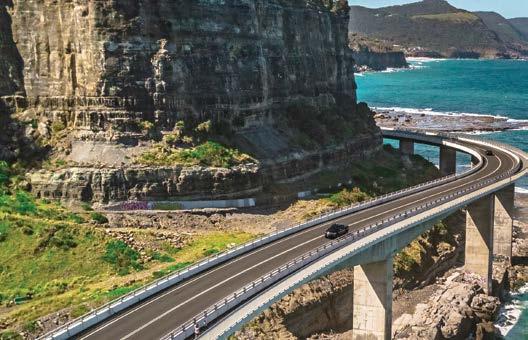
Over the past seven years, this national scheme has been administered and further developed by ARRB.
The scheme retains its original support and objective of providing a robust framework allowing the developers and suppliers of innovative products to have the claims and benefits relating to that product rigorously assessed. The assessment process involves a carefully assembled “Product Evaluation Panel (PEP), comprising of industry recognised experts and researchers and road agency representatives where appropriate following a Risk-Based triage assessment.
The TIPES scheme doesn’t just confine itself to one area of road infrastructure. It operates across a wide range of components including pavements/pavement materials (including recycled), geotechnical related products, pipe systems, ITS and across the traffic engineering and management sphere, with successful products receiving certification and an entry on the TIPES Register.
This in turn provides suppliers access to potential procurers and sponsors and in many cases further steps towards inclusion within local Approved Lists.
Find out more about TIPES and its benefits at: https://www.arrb.com.au/tipes

HOW THE iPAVE CAN BE USED FOR AIRPORTS AS WELL AS ROADSPhoto: D.R.E. Shackleton
The TIPES evaluation of the latest batch of products has just been completed, with a positive outcome being achieved by two products, allowing their usage on roads in Queensland.
The latest products were evaluated under the Australian Road Research Board’s (ARRB) Transport Infrastructure Product Evaluation Scheme (TIPES) as applied to High Friction Surface Treatments (HFST) and Coloured Surface Treatments (CST). TIPES uses a performance-based assessment methodology, developed in consultation with road jurisdictions, to evaluate the ability of proprietary products to provide satisfactory long-term performance under Australian conditions.
The joint Product Evaluation Panel (PEP) concluded that the following are suitable for use on heavily trafficked roads in Queensland and have accordingly been awarded a muchcoveted TIPES Certificate:
• Damar CDC Pty Ltd – HIGHWAY ANTI-SKID – CST, Level 2 certification
• Global Road Maintenance Solutions Pty Ltd – OZGRIP - HFST – Level 3 certification
TIPES Governance Manager, Mark Steidle noted: “While there is extensive experience that such materials play a significant role in network management and safety, it is important that as well as being specification
focused, they are resilient and provide value for money to road agencies.”
“A carefully considered specification, testing regime and evaluation process are all essential and we would like to commend our latest successful applicants for recognising the significance of the TIPES Supplements that ARRB has developed with TMR, and now administers at the latter’s request,” he added.
James West of Damar CDC Pty Ltd (Damar Industries) said the TIPES scheme set the bar high and was a rigorous process.
“We understand the importance of qualifying products and a result, gaining approval is really important to us. We are proud that our product has received Level 2 TIPES Certification showing that they are fitfor-purpose. This gives the applicator, client and road user confidence in the products being used. “
“We are very conscious of the fact that specialist surfacings and roadmarkings are an essential tool for overall road safety,” Mr West added.

“Coloured surfacings such as Highway Anti-Skid are playing a greater role each and every day to segregate, delineate and guide many different road user groups through nominated cycle ways, school zones, town entry treatments, wildlife crossings and other hazards,” he said.

Damar CDC Pty Ltd also currently has a second CST product being assessed with the determination expected very soon.
Additionally, two applications have also been received from two other suppliers and are currently progressing.
The assessment protocols for HFSTs and CSTs and how to apply for assessment are detailed in local TIPES Supplements, which can be found from the following website: https://www.arrb.com.au/tipes
For more information regarding the TIPES scheme, please contact Paul Hillier of ARRB on 0416 120478 or paul.hillier@arrb.com.au

ARRB’s Senior Professional Leader, Mobility Futures, Dr Robert Kochhan, recently joined Africa’s biggest solar challenge, the Sasol Solar Challenge.
Taking place in South Africa in September, the event hosted solar car teams from around the world to compete in a road journey covering the most kilometres without using a single drop of fuel.
Using only solar photovoltaic power, the challenge runs from Johannesburg to Cape Town, with a drop in altitude of more than 1,500 metres.
Dr Kochhan is ARRB’s electric vehicle (EV) expert, who joined the event as a volunteer after previously attending the World Solar Challenge in Australia, the biggest event of this type where solar cars complete the 3,000 km journey between Darwin to Adelaide in less than a week
“My love for vehicle technology and my educational background, work experience and previous solar challenge experience fuelled my
decision to join the Sasol Solar Challenge”, Dr Kochhan said.
The challenge displays what can be achieved using today’s solar photovoltaic and light-weight vehicle technology to cover long distances without using fossil fuels.
With his knowledge of solar car technology and passion for sustainable mobility, Dr Kochhan took the opportunity to meet other experts in solar and vehicle technology at one of the major solar car racing events in the world.
“I am most passionate about solar energy technology as a means of renewable energy generation. It can be used on vehicles, buildings, fields, small-scale or large scale to contribute to our energy needs”, Dr Kochhan said.
The start date for event coincided with the World EV Day on Friday 9th September, celebrating sustainable electric mobility. For more information, visit: https://www.solarchallenge.org.za
Visit: https://arrb.com.au to find out how ARRB can assist with creating EV and sustainable future mobility solutions for you and your business.
So too, the Engineer can use the vast capacity of Finite Element analysis to validate, optimize and adapt data to create the finest design solutions.

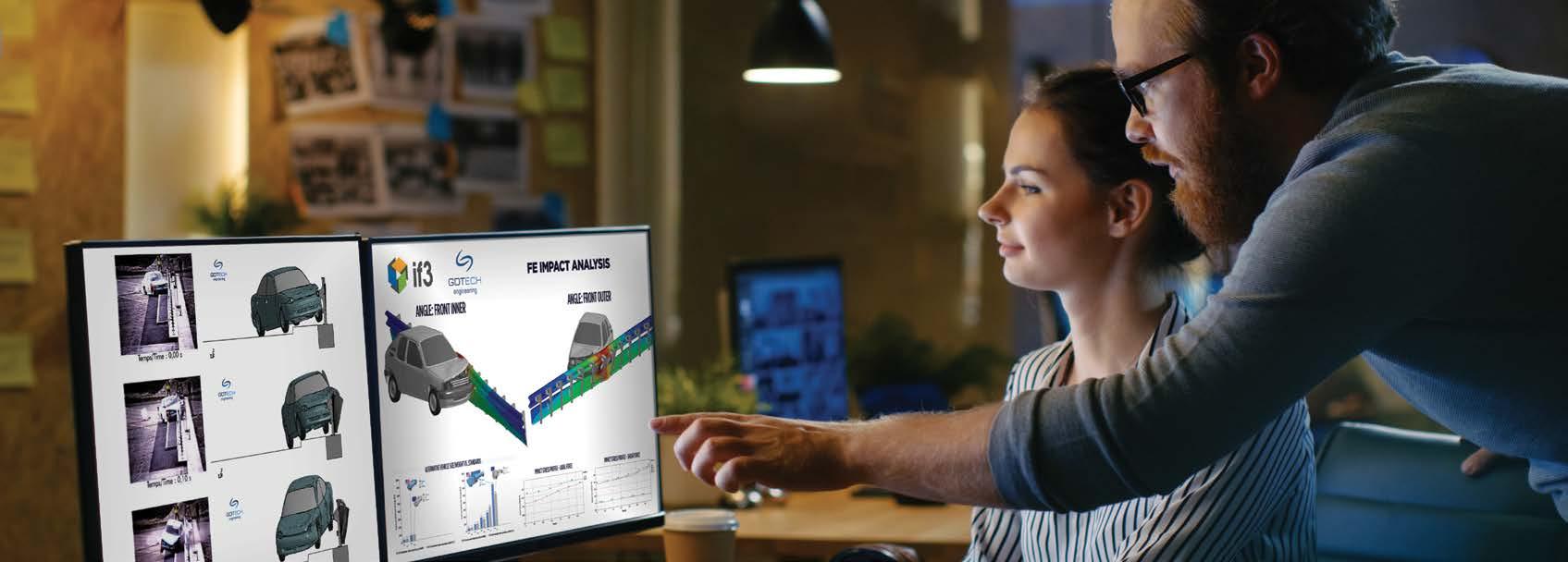






Established in 1990, National Precast is the only industry body representing precast concrete manufacturers. Membership comprises precast manufacturers of all capabilities, across all states, as well as product and service suppliers, industry professionals, tertiary institutions and allied organisations.
As it unites the industry through national members’ meetings and dinners, National Precast empowers, represents and promotes its members. Following is a snapshot of some of the projects being undertaken by National Precast members across Australia.
For more information, or to find a Precaster for your next project, visit: www.nationalprecast.com.au
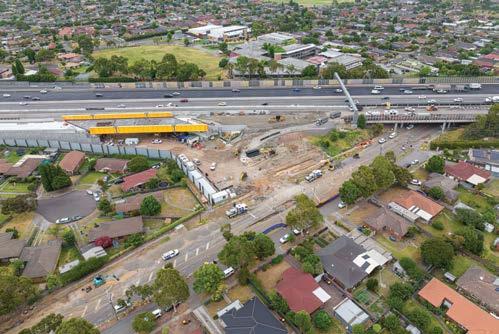

Location: Perth, WA Master Precaster: Georgiou and Australian Precast Solutions
Georgiou and Australian Precast Solutions have been engaged to supply and deliver precast elements for the Armadale level crossing removal project. The two companies have commenced manufacture to deliver the precast components, to assist the ALUA consortium to deliver the $1 billion project. The ALUA Alliance consists of Acciona Construction Australia, BMD Construction, WSP Australia and AECOM Australia.
Location: Mulgrave, VIC Master Precaster: The Reinforced Earth Company Australia
The New Police Road ramp in Mulgrave (a suburb in Melbourne’s south-east) is already regulating traffic flow onto the Monash Freeway.
The Reinforced Earth Company has supplied over 540 precast-facing panels, forming part of the ramp’s mechanically stabilised earth structure. The ramp is part of the Monash Freeway Upgrade and has resulted in safer and easier outbound connections to the Monash Freeway and EastLink.
Project: Mitchell Freeway Extension

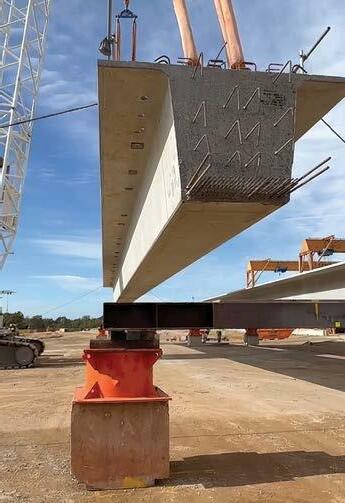
Location: Perth, WA
Master Precaster: PERMAcast
As part of Main Roads WA's Mitchell Freeway extension project, National Precast Master Precaster PERMAcast is supplying 40 Tee Roff beams for the bridge over the Butler rail line and Lukin Drive Interchange. The beams were manufactured with class S65 concrete and have a design life of 100 years. Each beam weighs 100 tonnes and takes three days to manufacture and cure to MRWA standards.
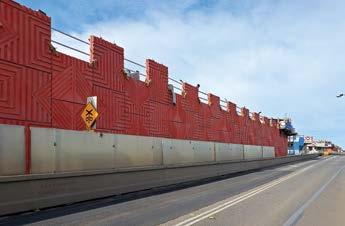
Location: Barwon Heads, VIC
Master Precaster: The Reinforced Earth Company Australia
Upgrades to Barwon Heads Road are underway and National Precast Master Precaster The Reinforced Earth Company has been engaged to supply 810 precast panels for the new bridge over the rail line at Marshall. The Class 2 finish panels incorporate designs by the Wadawurrung Traditional Owners Aboriginal Corporation (WTOAC) and their rich earthy colour reflects the soils of the region.
 Peter O’Riordan, Chair, Technical Board, hyperTunnel
Peter O’Riordan, Chair, Technical Board, hyperTunnel
After a short-lived deceleration in 2020-21 due to pandemic restrictions, the growth of road building and tunnelling in Australia is strong again, with as many tunnels being built in the past five years as in the previous two decades. This upward trend is driven by the demands of a rapidly increasing urban population and a growing appetite among private investors to fund public infrastructure projects. Several major schemes are currently underway, including the WestConnex in Sydney, Melbourne’s West Gate Tunnel and North East Link, and the Great Western Highway upgrade in New South Wales which will incorporate Australia’s longest road tunnel.
There are big advances in technology on the horizon too, which promise to make tunnels and underground construction and maintenance much faster, cheaper, safer, less disruptive and more environmentally friendly. This promises to further boost an already booming sector by removing a lot of the risk and pain of large-scale infrastructure projects.
Each hyperBot robot works to a construction plan, which determines exact deployment location, material strength, chemistry specification (different robots can carry different chemicals) and chemical volume.
One significant area of project risk relates to geology. Australia’s land mass is made up of a complex geological jigsaw incorporating almost every type of rock on earth. Large tunnelling schemes almost always encounter sizeable variations in geological conditions requiring an array of approaches, equipment and expertise. As demand grows for new urban infrastructure and more and more tunnels are being constructed, the call for better early site investigation is getting stronger. While large established cities may be lucky enough to have a database of ground conditions and tunnelling risks for reference, less developed cities where there is less previous tunnelling experience can be high risk for large projects.

Understanding ahead of time what these ground conditions will look like in any detail has, up to now, been almost impossible.
When you don’t know what you’re dealing with before you start digging, it can cause big problems. Delays, spiralling costs and disputes between clients and contractors are all too common.
 Rather than digging through the ground with a cylindrical boring machine or using a traditional drill-and-blast technique, the hyperTunnel method uses a simple horizontal directional drilling (HDD) rig to install a network of HDPE pipes to provide access to the whole tunnel length so that a swarm of multi-function robots can 3D print the tunnel.
Swarms of hyperBots are sent into each construction bore to build the structural shell, deploying an additive manufacturing process, similar to 3D printing.
Rather than digging through the ground with a cylindrical boring machine or using a traditional drill-and-blast technique, the hyperTunnel method uses a simple horizontal directional drilling (HDD) rig to install a network of HDPE pipes to provide access to the whole tunnel length so that a swarm of multi-function robots can 3D print the tunnel.
Swarms of hyperBots are sent into each construction bore to build the structural shell, deploying an additive manufacturing process, similar to 3D printing.
hyperBots perform a wide range of tasks including chamber cutting, spoil removal, micro-deep mixing cement and deployment into the geological formation of composite construction materials such as cementitious grouts or polyureasilicate injection resins.

The West Gate Tunnel project is a case in point; work was temporarily halted in 2019 when soil along the route was found to be contaminated.
Around Sydney meanwhile, the prevalent Triassic Hawkesbury sandstone is well known for carrying high residual tectonic stresses
that can cause structural failures in deep excavations. However, measuring these at close intervals along the length of a tunnel’s route is usually impractical because of cost or access issues. Designers and contractors must therefore work with incomplete data, which is far from ideal.
The good news is that a new groundsurveying methodology from British start-up hyperTunnel is set to fundamentally change all this. Building on technologies already proven in other industries for example oil & gas, it provides a much more thorough understanding of the geology along a tunnel’s entire route before any excavation starts.
Initially, horizontal core samples are obtained along the tunnel path. This index bore is then back-reamed to a larger diameter and lined with High-Density Polyethylene (HDPE) pipe. A newly developed 3D ground-penetrating radar (GPR) is used to run along the length of the pipe to gather additional and unprecedented levels of data. Accurate and finely spaced sampling with either step frequency or multiple pulsed frequencies results in a detailed and reliable model. This can then be meshed together with 360-degree tomographic data to further enhance the model and aid visualisation.

The result is game-changing – detailed insights into ground conditions showing fine changes in geology as well as features such as fissures, voids or water, the like of which has never before been seen.
hyperTunnel’s approach covers much more than geological surveying, however. The company has developed methods for the design, construction and maintenance of underground assets.
For larger projects, hyperTunnel is developing a new dragline shield technology, called hyperShield, utilising techniques proven in open-cast mining, which makes it possible to complete the excavation in one pass.



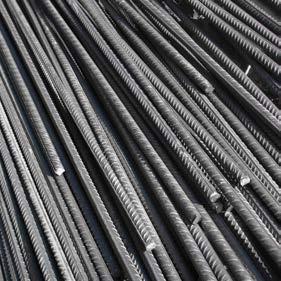


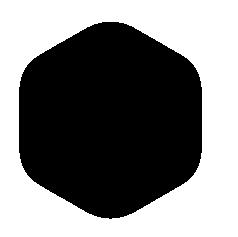





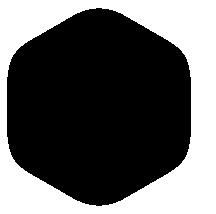
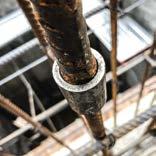
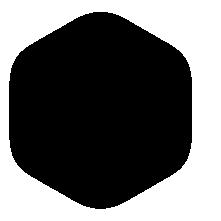

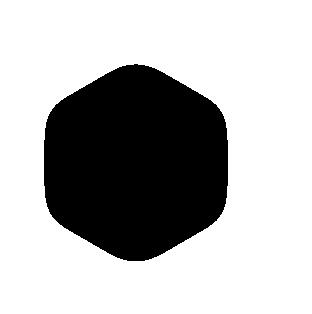





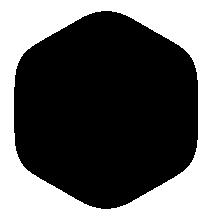


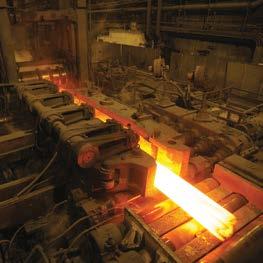















































































After data collection, the multiple layers of information obtained by the remote survey technologies are incorporated into a digital twin of the intended structure and the geology immediately surrounding it, supplemented by building information modelling. AI machine-learning techniques are then used to match exactly the geology of the underground environment to the chemistry that will best stabilise the structure for example reducing ground permeability by grouting.
Next, using Horizontal Directional Drilling (HDD), a series of HDPE bore pipes that define the perimeter of the desired structure are installed. Large numbers of semi-autonomous robots travel through these bores cutting and filling chambers – effectively 3D printing the tunnel in the ground. The untreated geology within the structure is then disrupted and a remotecontrolled excavator is used to remove the spoil. Finally, the bore pipes are fitted with continuous monitoring technologies for ongoing structural health monitoring.
The advantages of this ultra-high-tech in-situ construction approach are huge. Labour and consumable costs are far lower than conventional tunnelling methods and, because construction takes place along the entire length of the tunnel at the same time, productivity is greatly increased. Geological certainty makes construction less risky and it’s also far safer because the tunnel is structurally sound before a human enters it.
There are big environmental benefits too. Less energy, water and raw materials are needed, and waste and air pollution are reduced. Work sites are smaller and more easily accommodated in built up environments. The spoil is uncontaminated and therefore can be recycled if suitable.

The approach is also ideal for repair and remediation work. Because the maintenance tasks are conducted by robots, which access the tunnel or structure from the side via installed pipes, in many cases, roads or railways do not have to be closed. It’s an ideal solution for when direct access from


above ground isn’t possible or desirable –for ground stabilisation drilling for example – as is often the case in urban locations or under existing assets. The ground around a structure can be ‘fixed’, for example, to stop water penetration, thus avoiding the need to carry out repairs on the structure itself.

After construction, the benefits continue as hyperTunnel’s state-of-the-art smart sensors monitor the condition of the entire structure 24/7, avoiding the need for costly and less complete onsite maintenance checks.
hyperTunnel formally launched its transformative approach in 2021 and has already completed a large trial in the UK. With a string of big investments and partnerships under its belt, it’s rapidly gaining widespread industry acceptance. It has now set its sights on the Australian tunnelling sector where it can only boost an already thriving market by reducing or removing many of the biggest challenges to underground construction.



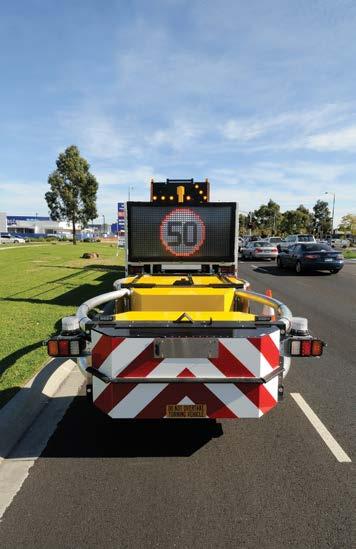













At Master Builders Solutions, our commitment to world’s best practice sustainable operations isn’t just empty words or clever marketing – it is a genuine commitment to minimising the environmental impact of all aspects of our business, including manufacturing, services, products and day-to-day operations.
It’s also a genuine commitment to working in tandem with our customers, business partners and other stakeholders to understand their sustainability needs and ESD goals - helping them to achieve those goals, as we work towards our goal of achieving Carbon Neutrality by 2030.
Scan the QR Code for more information.
